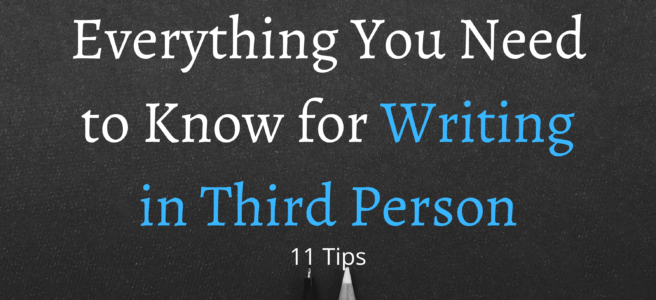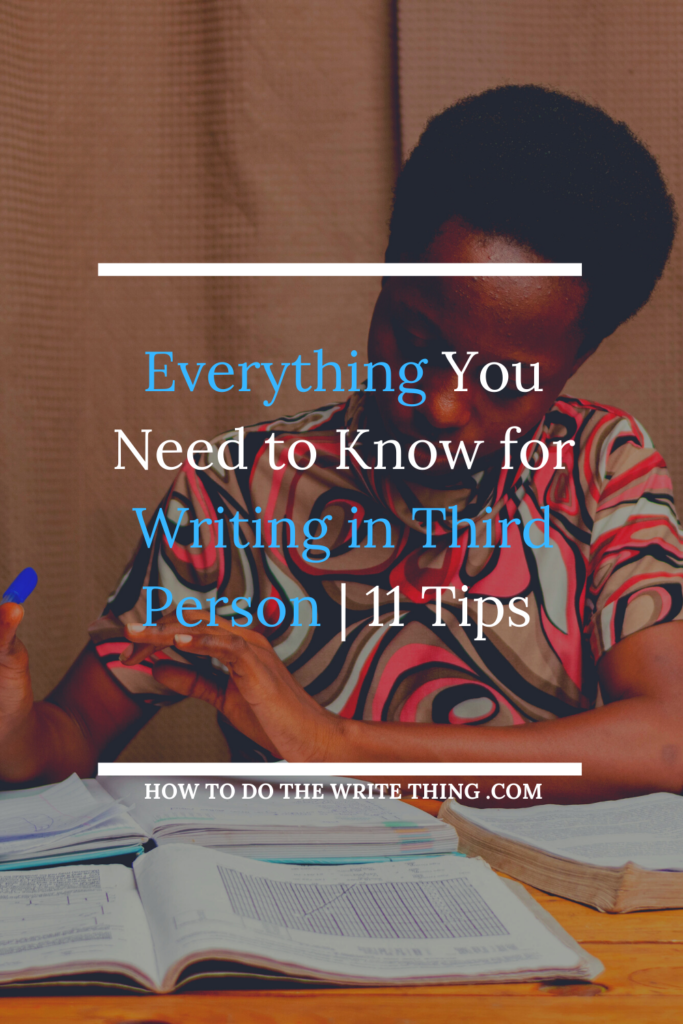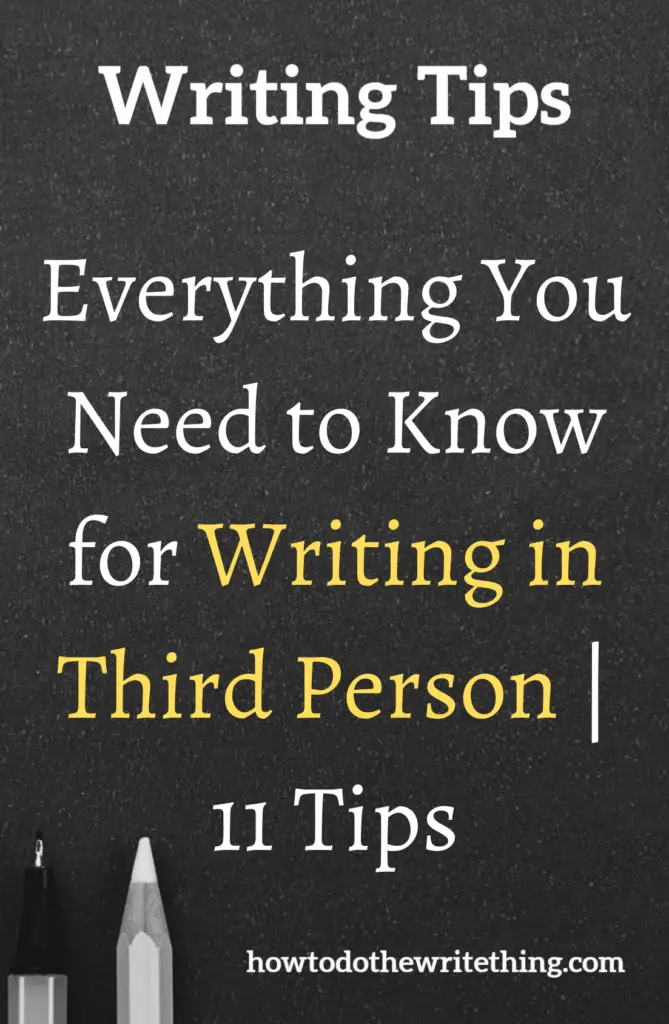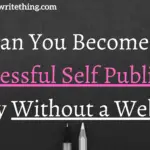- [email protected]
- (650) 338-8226

Cupertino, CA

- Our Philosophy
- Our Results
- News, Media, and Press
- Common Application
- College Application Essay Editing
- Extracurricular Planning
- Academic Guidance
- Summer Programs
- Interview Preparation
Middle School
- Pre-High School Consultation
- Boarding School Admissions
College Admissions
- Academic and Extracurricular Profile Evaluation
- Senior Editor College Application Program
- Summer Program Applications
- Private Consulting Program
- Transfer Admissions
- UC Transfer Admissions
- Ivy League Transfer Admissions
Graduate Admissions
- Graduate School Admissions
- MBA Admissions
Private Tutoring
- SAT/ACT Tutoring
- AP Exam Tutoring
- Olympiad Training
Research Programs
- Science Research Program
- Humanities Competitions
- Passion Project Program
- Ad Hoc Consulting
- Athletic Recruitment
- National Universities Rankings
- Liberal Arts Colleges Rankings
- Public Schools Rankings
Acceptance Rates
- University Acceptance Rates
- Transfer Acceptance Rates
- Supplemental Essays
- College Admissions Data
- Chances Calculator
- GPA Calculator
National Universities
- College Acceptance Rates
- College Overall Acceptance Rates
- College Regular Acceptance Rates
- College Early Acceptance Rates
- Ivy League Acceptance Rates
- Ivy League Overall Acceptance Rates
- Ivy League Regular Acceptance Rates
- Ivy League Early Acceptance Rates
Public Schools
- Public Schools Acceptance Rates
- Public Schools Overall Acceptance Rates
- Public Schools Regular Acceptance Rates
- Public Schools Early Acceptance Rates
Liberal Arts
- Liberal Arts Colleges Acceptance Rates
- Liberal Arts Colleges Overall Acceptance Rates
- Liberal Arts Colleges Regular Acceptance Rates
- Liberal Arts Colleges Early Acceptance Rates

Third-Person Writing: A Guide for Effective Academic Writing

By Eric Eng

In this post, we will explore the concept of third-person writing and its importance for academic writing. We will discuss the benefits of using third-person language, provide examples of how it can be used in different types of academic writing, and offer practical tips for incorporating it into your writing. By the end of this post, you will have a solid understanding of third-person writing and how to use it effectively in your academic work.
Academic writing is a fundamental part of any high school student’s education, and mastering the art of writing in a clear and concise manner is essential to academic success. One key aspect of effective academic writing is the use of third-person language, which can help writers create a more objective and authoritative tone.
What is third-person writing?
What is third-person writing? Third-person writing is a style of writing that involves using pronouns such as “he,” “she,” “it,” “they,” or “one” to refer to individuals or objects instead of using first- or second-person pronouns like “I,” “me,” “we,” “us,” “you,” or “your.” Third-person language is commonly used in academic writing to create a more objective and authoritative tone.
For instance, instead of saying “I believe,” third-person writing would say, “It can be argued.” This writing style can be particularly effective when presenting research or making a persuasive argument, as it allows the writer to distance themselves from their ideas and present them as more balanced and objective.
Writing in the third person differs from first- and second-person writing in several key ways. First-person writing involves using pronouns like “I,” “me,” “we,” or “us” to refer to oneself or a group of individuals. This writing style is often used in personal narratives, memoirs, or opinion pieces, where the writer’s personal experiences or opinions are central to the piece.
Conversely, second-person writing involves using pronouns like “you” or “your” to address the reader directly.

This writing style is often used in instructional or self-help texts, where the writer gives advice or instructions to the reader. In contrast, writing in the third person avoids direct references to the writer or reader and instead focuses on the topic or subject. This writing style can be particularly effective in academic writing , where objectivity and a neutral tone are often valued.
The benefits of using third-person writing in academic writing
Using the third-person point of view in academic writing offers several benefits, including creating a more objective and authoritative tone. By using third-person pronouns instead of first-person pronouns, writers can present information more neutral and unbiased. This can be particularly important in academic writing, where presenting a balanced and objective perspective is often valued.
Writing in the third person can also help writers distance themselves from their arguments and present a more balanced perspective. By using third-person pronouns, writers can avoid appearing overly confident or biased. Instead, they can present their arguments in a more measured and thoughtful way, allowing readers to make their judgments about the validity of the arguments presented.
Moreover, it can be especially useful in academic writing that involves research. When presenting research findings or making a persuasive argument, writers may be tempted to rely heavily on first-person language to convince readers of the validity of their claims. However, this can undermine the persuasiveness of the argument.
Using third-person writing instead can help writers present their research findings and arguments in a more objective and authoritative way, ultimately making their work more convincing to readers.
In summary, using a third-person point of view in academic writing can help writers create a more objective and authoritative tone, distance themselves from their arguments, and present a more balanced perspective. By using third-person pronouns and language effectively, writers can make their writing more persuasive and ultimately more successful in communicating their ideas to their readers.
What are the words to avoid in third-person writing?
What are the words to avoid in third-person writing? When writing in the third person, it’s important to avoid using first- and second-person language, as these types can make the writing appear less objective and authoritative. Here are some examples of words and phrases to avoid when writing in the third person:
- First-person pronouns: This includes words like “I,” “me,” “my,” “we,” and “us.” Avoid using these pronouns in the third-person point of view.
- Second-person pronouns include words like “you” and “your.” Avoid using these pronouns, as they can make the writing feel more direct and less objective.
- Imperative verbs: Imperative verbs are those that give commands or instructions, such as “do,” “make,” or “take.” These verbs should generally be avoided as they can make the writing feel less objective and more directive.
- Personal opinions: It’s important to avoid including personal opinions or biases. Instead, focus on presenting the facts and allowing readers to draw their conclusions.
By avoiding these words and phrases, writers can create more effective and authoritative third-person writing better suited for academic and professional contexts.
Examples of third-person writing in academic writing
The third-person point of view is commonly used in various academic writing contexts, including research papers, literature reviews, and essays . Here are some examples of how third-person writing can be used effectively in these contexts:

- Research papers: In research papers, it can be used to present research findings and conclusions in a more objective and authoritative manner. For example, instead of saying, “I found that,” a third-person point of view would say, “It was found that.” This helps to create a more neutral tone and emphasizes the importance of the research itself rather than the researcher’s personal experience.
- Literature reviews: In literature reviews , it can be used to summarize and analyze existing research in an objective and authoritative way. For example, instead of saying, “I think that this study is important,” third-person writing would say, “This study has been found to be important by previous researchers.” This helps to emphasize the research’s importance and present it more objectively and neutrally.
- Essays: In essays, it can be used to present arguments and evidence in a more balanced and persuasive manner. For example, instead of saying, “I believe that,” a third-person point of view would say, “It can be argued that.” This helps to present the argument in a more objective and authoritative way, which can be particularly important in persuasive essays.
The potential benefits of using third-person writing in each of these contexts include the following:
- Creating a more objective and authoritative tone.
- Emphasizing the importance of the research or argument rather than the writer’s personal experience or opinion.
- Presenting information in a more balanced and neutral way.
By writing in the third person effectively, writers can make their academic writing more effective and persuasive, ultimately helping to communicate their ideas more effectively to their readers.
Tips for using third-person writing in academic writing
To effectively incorporate third-person writing into academic writing, consider the following tips:
- Use active voice: Using active voice can help to make the third-person point of view more engaging and direct. For example, instead of saying, “It was found that,” say, “Researchers found that.” This can make the writing feel engaging rather than passive and dull.
- Vary sentence structure: To avoid overusing third-person pronouns, try to vary sentence structure. For example, instead of repeatedly using “he” or “she,” try using more descriptive phrases or words, such as “the researcher” or “the author.”
- Avoid personal opinions: In third-person writing, it’s important to avoid personal opinions or biases. Instead, focus on presenting the facts and allowing readers to draw their own conclusions.
- Use reliable sources: In academic writing, it’s important to use reliable and trustworthy sources to support your arguments. Make sure to cite your sources properly and avoid using biased or unreliable sources.
- Proofread carefully: Finally, proofread your writing carefully to ensure you’ve used third-person language consistently and effectively. Look for instances of first- or second-person language and replace them with third-person language, as necessary.
Common mistakes to avoid when using third-person writing in academic writing include overusing third-person pronouns, failing to vary sentence structure, and using vague or ambiguous language. Additionally, it’s important to avoid using personal opinions or biases, as this can undermine the objectivity and authority of your writing.

By following these tips and avoiding common mistakes, you can effectively incorporate third-person pov into your academic writing and create more persuasive and authoritative pieces.
In conclusion, using third-person writing can be a powerful tool for high school students looking to improve their academic writing. Students can create a more objective, authoritative, and balanced tone in their writing by avoiding first- and second-person language and using third-person pronouns and another language.
The benefits of using third-person writing include presenting research findings and arguments in a more neutral and objective manner, emphasizing the importance of the research or argument rather than the writer’s personal experience or opinion, and presenting information in a more balanced and neutral way.
By incorporating these tips and avoiding common mistakes, students can make their academic writing more effective and persuasive.
Having all the necessary information is important before choosing any course of action. AdmissionSight is always here to assist you with any questions or concerns. We have more than ten years of expertise assisting students in successfully navigating the challenging admissions process.
Consult with AdmissionSight and find out what we can do to help you get into the school of your choice by ensuring that you are sufficiently aware and well-prepared for the application process.
Want to assess your chances of admission? Take our FREE chances calculator today!

Why College Admissions Isn’t Perfect

US News Rankings

The Personal Statement: The Holy Grail of College Admissions

The Modern Day 4.0 and 1600 SAT Score Student Is No Longer Impressive

The Competitive Nature of College Admissions for Asian Americans

The College Application

Our Comprehensive Approach

Ivy League Schools

How Early Should You Prepare for College?

Featured in US News & World Report Best Colleges Publication

Congratulations to AdmissionSight Students and their Acceptances!

College Rejection

College Rankings

College Consultants Could Make A Difference

College Admissions Scandal and Higher Education

What Should You Write in Your MIT Fun Form?

How to Secure an Internal Transfer and Dual Degree to Wharton

How to Join the FBLA Competitive Events

How to Apply for the Coolidge Scholarship

Top 33 Colleges That Require Test Scores

How to Apply for RISE by Schmidt Futures and the Rhodes Trust

Top 50 Test-Optional Colleges

Balancing Cost and Comfort: Finding the Right Student Accommodation for You

How to Compete In the USA Math Olympiad (USAMO)

How to Get the Cameron Impact Scholarship

Princeton Acceptance Rate: Admissions Statistics

How to Receive the President’s Volunteer Service Award (PVSA)

How to Get a Coca-Cola Scholarship

10 Online Learning Resources for High School Students

What is Harvard Known for?

How to Compete in the FIRST Robotics Competition

How To Compete In The American Protégé International Competitions
Leave a comment cancel reply.
Your email address will not be published. Required fields are marked *
Save my name, email, and website in this browser for the next time I comment.
Recent Articles

What Should You Write in...

How to Secure an Internal...

How to Join the FBLA...

How to Apply for the...

Top 33 Colleges That Require...

How to Apply for RISE...

Balancing Cost and Comfort: Finding...

How to Compete In the...

How to Get the Cameron...

How to Receive the President’s...
Sign up now to receive insights on how to navigate the college admissions process..

Admissions Counseling
- Academic & Extracurricular Profile Evaluation
Copyright © AdmissionSight 2024
Privacy Policy - Terms and Conditions
- PRO Courses Guides New Tech Help Pro Expert Videos About wikiHow Pro Upgrade Sign In
- EDIT Edit this Article
- EXPLORE Tech Help Pro About Us Random Article Quizzes Request a New Article Community Dashboard This Or That Game Popular Categories Arts and Entertainment Artwork Books Movies Computers and Electronics Computers Phone Skills Technology Hacks Health Men's Health Mental Health Women's Health Relationships Dating Love Relationship Issues Hobbies and Crafts Crafts Drawing Games Education & Communication Communication Skills Personal Development Studying Personal Care and Style Fashion Hair Care Personal Hygiene Youth Personal Care School Stuff Dating All Categories Arts and Entertainment Finance and Business Home and Garden Relationship Quizzes Cars & Other Vehicles Food and Entertaining Personal Care and Style Sports and Fitness Computers and Electronics Health Pets and Animals Travel Education & Communication Hobbies and Crafts Philosophy and Religion Work World Family Life Holidays and Traditions Relationships Youth
- Browse Articles
- Learn Something New
- Quizzes Hot
- This Or That Game
- Train Your Brain
- Explore More
- Support wikiHow
- About wikiHow
- Log in / Sign up
- Education and Communications
- Editing and Style
How to Write in Third Person
Last Updated: May 10, 2024 Fact Checked
This article was co-authored by Alicia Cook . Alicia Cook is a Professional Writer based in Newark, New Jersey. With over 12 years of experience, Alicia specializes in poetry and uses her platform to advocate for families affected by addiction and to fight for breaking the stigma against addiction and mental illness. She holds a BA in English and Journalism from Georgian Court University and an MBA from Saint Peter’s University. Alicia is a bestselling poet with Andrews McMeel Publishing and her work has been featured in numerous media outlets including the NY Post, CNN, USA Today, the HuffPost, the LA Times, American Songwriter Magazine, and Bustle. She was named by Teen Vogue as one of the 10 social media poets to know and her poetry mixtape, “Stuff I’ve Been Feeling Lately” was a finalist in the 2016 Goodreads Choice Awards. There are 7 references cited in this article, which can be found at the bottom of the page. This article has been fact-checked, ensuring the accuracy of any cited facts and confirming the authority of its sources. This article has been viewed 1,143,834 times.
Writing in third person can be a simple task, with a little practice. For academic purposes, third person writing means that the writer must avoid using subjective pronouns like “I” or “you.” For creative writing purposes, there are differences between third person omniscient, limited, objective, and episodically limited points of view. Choose which one fits your writing project.
Writing Third Person Point of View
The third-person point of view discusses the person or people being talked about in academic or creative writing. In this perspective, you’d shift focus from subject to subject. Use pronouns like he/him, she/her, they/them, or it/itself.
Writing in Third Person Academically

- Third person helps the writing stay focused on facts and evidence instead of personal opinion.

- Third person pronouns include: he, she, it; his, her, its; him, her, it; himself, herself, itself; they; them; their; themselves.
- Names of other people are also considered appropriate for third person use.
- Example: “ Smith believes differently. According to his research, earlier claims on the subject are incorrect.”

- First person pronouns include: I, me, my, mine, myself, we, us, our, ours, ourselves. [3] X Research source
- The problem with first person is that, academically speaking, it sounds too personalized and too subjective. In other words, it may be difficult to convince the reader that the views and ideas being expressed are unbiased and untainted by personal feelings. Many times, when using first person in academic writing, people use phrases like "I think," "I believe," or "in my opinion."
- Incorrect example: “Even though Smith thinks this way, I think his argument is incorrect.”
- Correct example: “Even though Smith thinks this way, others in the field disagree.”

- Second person pronouns include: you, your, yours, yourself. [4] X Research source
- One main problem with second person is that it can sound accusatory. It runs to risk of placing too much responsibility on the shoulders of the reader specifically and presently reading the work.
- Incorrect example: “If you still disagree nowadays, then you must be ignorant of the facts.”
- Correct example: “Someone who still disagrees nowadays must be ignorant of the facts.”

- Indefinite third person nouns common to academic writing include: the writer, the reader, individuals, students, a student, an instructor, people, a person, a woman, a man, a child, researchers, scientists, writers, experts.
- Example: “In spite of the challenges involved, researchers still persist in their claims.”
- Indefinite third person pronouns include: one, anyone, everyone, someone, no one, another, any, each, either, everybody, neither, nobody, other, anybody, somebody, everything, someone.
- Incorrect example: "You might be tempted to agree without all the facts."
- Correct example: “ One might be tempted to agree without all the facts.”
- This is usually done in an attempt to avoid the gender-specific “he” and “she” pronouns. The mistake here would be to use the “they” pronoun with singular conjugation. [5] X Research source
- Incorrect example: “The witness wanted to offer anonymous testimony. They was afraid of getting hurt if their name was spread.”
- Correct example: “The witness wanted to offer anonymous testimony. They were afraid of getting hurt if their name was spread.”
Writing in Third Person Omniscient

- For instance, a story may include four major characters: William, Bob, Erika, and Samantha. At various points throughout the story, the thoughts and actions of each character should be portrayed. These thoughts can occur within the same chapter or block of narration.
- Writers of omniscient narratives should be conscious of “head-hopping” — that is, shifting character perspectives within a scene. While this does not technically break the rules of Third Person Omniscience, it is widely considered a hallmark of narrative laziness.
- In a sense, the writer of a third person omniscient story is somewhat like the “god” of that story. The writer can observe the external actions of any character at any time, but unlike a limited human observer, the writer can also peek into the inner workings of that character at will, as well.
- Know when to hold back. Even though a writer can reveal any information they choose to reveal, it may be more beneficial to reveal some things gradually. For instance, if one character is supposed to have a mysterious aura, it would be wise to limit access to that character's inner feelings for a while before revealing his or her true motives.

- Do not use first person and second person points of view in the narrative or descriptive portions of the text.
- Correct example: Bob said to Erika, “I think this is creepy. What do you think?”
- Incorrect example: I thought this was creepy, and Bob and Erika thought so, too. What do you think?
Writing in Third Person Limited

- The thoughts and feelings of other characters remain an unknown for the writer throughout the duration of the text. There should be no switching back and forth between characters for this specific type of narrative viewpoint.
- Unlike first person, where the narrator and protagonist are the same, third person limited puts a critical sliver of distance between protagonist and narrator. The writer has the choice to describe one main character’s nasty habit — something they wouldn’t readily reveal if the narration were left entirely to them.

- In other words, do not use first person pronouns like “I,” “me,” “my,” “we,” or “our” outside of dialog. The main character's thoughts and feelings are transparent to the writer, but that character should not double as a narrator.
- Correct example: “Tiffany felt awful after the argument with her boyfriend.”
- Correct example: “Tiffany thought, “I feel awful after that argument with my boyfriend.”
- Incorrect example: “I felt awful after the argument with my boyfriend.”

- Note that the writer can offer insight or guesses regarding the thoughts of other characters, but those guesses must be presented through the perspective of the main character.
- Correct example: “Tiffany felt awful, but judging by the expression on Carl's face, she imagined that he felt just as bad if not worse.”
- Incorrect example: “Tiffany felt awful. What she didn't know was that Carl felt even worse.”

- Correct example: “Tiffany watched from the window as Carl walked up to her house and rang the doorbell.”
- Incorrect example: “As soon as Tiffany left the room, Carl let out a sigh of relief.”
Writing in Episodically Limited Third Person

- Limit the amount of pov characters you include. You don't want to have too many characters that confuse your reader or serve no purpose. Each pov character should have a specific purpose for having a unique point of view. Ask yourself what each pov character contributes to the story.
- For instance, in a romance story following two main characters, Kevin and Felicia, the writer may opt to explain the inner workings of both characters at different moments in the story.
- One character may receive more attention than any other, but all main characters being followed should receive attention at some point in the story.

- Multiple perspectives should not appear within the same narrative space. When one character's perspective ends, another character's can begin. The two perspectives should not be intermixed within the same space.
- Incorrect example: “Kevin felt completely enamored of Felicia from the moment he met her. Felicia, on the other hand, had difficulty trusting Kevin.”

- In a novel-length work, a good time to switch perspective is at the start of a new chapter or at a chapter break.
- The writer should also identify the character whose perspective is being followed at the start of the section, preferably in the first sentence. Otherwise, the reader may waste too much energy guessing.
- Correct example: “Felicia hated to admit it, but the roses Kevin left on her doorstep were a pleasant surprise.”
- Incorrect example: “The roses left on the doorstep seemed like a nice touch.”

- For instance, if Kevin had a talk with Felicia's best friend about Felicia's feelings for him, Felicia herself would have no way of knowing what was said unless she witnessed the conversation or heard about it from either Kevin or her friend.
Writing in Third Person Objective

- There does not need to be a single main character to focus on. The writer can switch between characters, following different characters throughout the course of the narrative, as often as needed.
- Stay away from first person terms like “I” and second person terms like “you” in the narrative, though. Only use first and second person within dialog.

- Imagine that you are an invisible bystander observing the actions and dialog of the characters in your story. You are not omniscient, so you do not have access to any character's inner thoughts and feelings. You only have access to each character's actions.
- Correct example: “After class, Graham hurriedly left the room and rushed back to his dorm room.”
- Incorrect example: “After class, Graham raced from the room and rushed back to his dorm room. The lecture had made him so angry that he felt as though he might snap at the next person he met.”

- Correct example: “When no one else was watching her, Isabelle began to cry.”
- Incorrect example: “Isabelle was too prideful to cry in front of other people, but she felt completely broken-hearted and began crying once she was alone.”

- Let the reader draw his or her own conclusions. Present the actions of the character without analyzing them or explaining how those actions should be viewed.
- Correct example: “Yolanda looked over her shoulder three times before sitting down.”
- Incorrect example: “It might seem like a strange action, but Yolanda looked over her shoulder three times before sitting down. This compulsive habit is an indication of her paranoid state of mind.”
Examples of Third Person POV

Expert Q&A

You Might Also Like

- ↑ https://stlcc.edu/student-support/academic-success-and-tutoring/writing-center/writing-resources/point-of-view-in-academic-writing.aspx
- ↑ http://studysupportresources.port.ac.uk/Writing%20in%20the%20third%20peson.pdf
- ↑ http://www.grammar-monster.com/glossary/third_person.htm
- ↑ https://www.grammarly.com/blog/use-the-singular-they/
- ↑ Alicia Cook. Professional Writer. Expert Interview. 11 December 2020.
- ↑ https://www.merriam-webster.com/words-at-play/point-of-view-first-second-third-person-difference
- ↑ https://ojs.library.dal.ca/YAHS/article/viewFile/7236/6278
About This Article

To write in third person, refer to people or characters by name or use third person pronouns like he, she, it; his, her, its; him, her, it; himself, herself, itself; they; them; their; and themselves. Avoid first and second person pronouns completely. For academic writing, focus on a general viewpoint rather than a specific person's to keep things in third person. In other types of writing, you can write in third person by shifting your focus from character to character or by focusing on a single character. To learn more from our Literary Studies Ph.D., like the differences between third person omniscient and third person limited writing, keep reading the article! Did this summary help you? Yes No
- Send fan mail to authors
Reader Success Stories
Jul 31, 2016
Did this article help you?

Jean Scicluna
Jan 31, 2021
Nov 4, 2016
Karen Evans
Aug 5, 2016
Oct 20, 2016

Featured Articles

Trending Articles

Watch Articles

- Terms of Use
- Privacy Policy
- Do Not Sell or Share My Info
- Not Selling Info
Don’t miss out! Sign up for
wikiHow’s newsletter
- How to Cite
- Language & Lit
- Rhyme & Rhythm
- The Rewrite
- Search Glass
How to Write a Research Paper in the Third Person
The point of view you write in affects how readers react to your ideas. When writing a research paper, avoid using first person words like "I" and "we," and second person point of view using "you," because they generally create less formal language. Although personal essays, lab experiments or survey results sections of papers may use some first person language, third person point of view most often gets used in formal academic writing and when referencing other people's work in order to lend integrity to the ideas.
Point of View Definitions
Third person uses nouns like people and pronouns such as he, she, they, it, his, her, their, its, him and them. Third person writing means writing about others rather than yourself or your reader, as in the sentence, Harrison (2014) explained the findings in detail.
Using Third Person
Maintaining third person point of view requires explaining ideas without direct references to yourself or your readers. For instance, to explain personal research results in third person, write I determined, rather than the research indicated. Sometimes papers may use first person language when recounting a study the writer conducted, but even then, third person creates more formality. When explaining information gathered from outside resources, always use third person language, such as Harris (2014) discovered similar consequences of active duty.
- Aims Community College: Point of View in Writing
- APA Style: Use of First Person in APA Style
- Purdue University: Style, Genre & Writing
Kristie Sweet has been writing professionally since 1982, most recently publishing for various websites on topics like health and wellness, and education. She holds a Master of Arts in English from the University of Northern Colorado.
7 Essential Tips for Writing in the Third Person

Table of contents

Alana Chase
Whether you’re a student, business professional, or writer, knowing how to write well in the third person is an essential skill.
But you may not be sure of all the rules or how to make your third-person writing shine.
As an editor and writing coach of 11 years, I’ve taught students and writers at all levels how to master the third-person point of view (POV). All you need to get started is a good understanding of third-person pronouns and a bit of practice for consistency.
By the end of this article, you’ll know when and how to use third-person perspective. You'll also find helpful tips for taking your third-person writing to the next level.
Key takeaways
- In the third-person perspective, the narrator is separate from the story.
- Third-person perspective uses he/him/his, she/her/hers, and they/them/their pronouns.
- Consistency is key: Don’t switch between perspectives in a single document.
- Practicing third-person writing and editing your work is vital to improving your skills.
What is third-person point of view (POV)?
In writing, there are three ways to tell a story: first-person, second-person, or third-person POV.
First-person POV is from the narrator’s perspective:
“ I saw the bird steal my sandwich, and I ran after it.”
Second-person POV is from the reader’s perspective:
“ You saw the bird steal your sandwich, and you ran after it.”
Third-person POV, however, separates the narrator from the story and uses third-person pronouns (like he/him, she/her, and they/them) to describe events, actions, thoughts, and emotions. Characters are referred to by name or one of these pronouns:
“ Alex saw the bird steal his/her/their sandwich, and he/she/they ran after it.”
Third-person POV is used in all kinds of writing — from novels to research papers, journalistic articles, copywriting materials, and more. Check out some examples below.
Examples of third-person perspective
- In a novel: “Robb and Jon sat tall and still on their horses, with Bran between them on his pony, trying to seem older than seven, trying to pretend that he’d seen all this before.” (From A Game of Thrones by George R. R. Martin)
- In a news article : “This weekend, Iceland experienced nearly 2,000 earthquakes within 48 hours. And they’ve kept coming since then – in swarms.” (From “Thousands of earthquakes have scientists watching for a volcanic eruption in Iceland” on NPR’s website )
- In copywriting : “Balm Dotcom’s formula has antioxidants and natural emollients to nourish dry lips.” (Website copy describing Glossier’s Balm Dotcom lip product )
7 tips for writing in the third person
Just like the first and second person, you’ve probably already written in the third person before. But to do it well , you’ll need some key tips and tricks in your writing toolkit.
Let’s dive into the seven essentials for third-person writing.
Tip 1: Use third-person determiners and pronouns
In grammar, determiners introduce and modify nouns. They’re used to specify what a noun refers to (like “ my laptop”) or the quantity of it (like “ many sandwiches”).
Meanwhile, pronouns are substitutes for nouns, referring to people, places, or things. For example, “Caroline [noun] is a skilled musician, and she [pronoun] especially loves playing the piano.”
When you write in the third person, use only third-person determiners and pronouns. Let’s take a look at the different types of pronouns.

Tip 2: Use names for clarity
In third-person writing, using names is crucial for clarity, especially when multiple people/characters share similar pronouns. Strategically incorporate names into your writing to help readers keep track of who’s who.
For example:
“She submitted the script draft to her, and she made suggestions for changes.”
“Mira submitted the script draft to Lynn, and Lynn made suggestions for changes.”
Tip: Use a character or person’s name when introducing them in your writing. Then, alternate between using pronouns and their name to prevent confusion.
Tip 3: Keep the narration neutral
When you write in the third person, your narrator is an uninvolved observer. They have no opinions on the people, places, things, or events they describe. Their words and tone should be neutral (but not boring).
To achieve this in your writing:
- Think of your narrator as a reporter. Their job is to detail what’s happening, when and why it’s occurring, who’s involved, and any background information that can give context. They don’t offer a personal interpretation of events. Instead, they provide facts and supporting details.
- Save the judgment for characters. Rather than having your narrator share their critique of events or individuals, have a character offer their opinion — either through dialogue, actions, or reactions. For instance, instead of writing, “Dr. Shaw was a courageous woman,” let a character convey admiration by telling Dr. Shaw, “I’ve always admired your fearlessness.”
- Be objective with your descriptions. Avoid subjective adjectives and focus on observable features. For example, instead of describing a landscape as “breathtaking,” write that it’s “marked with snow-capped mountains and patches of tall pine trees.”
Tip 4: Use descriptive language
Showing — and not just telling — is essential when writing in the third person. Instead of stating emotions and experiences outright, immerse your reader in your character’s reality. Create vivid descriptions of their thoughts, feelings, and surroundings. Use language that engages the senses: sight, sound, smell, touch, and taste.
For example:
“Aisha was nervous.”
“Aisha’s hands trembled, and her tongue felt dry against the roof of her mouth. The spotlight above the stage shone white-hot, causing beads of sweat to form along Aisha’s hairline.”
Tip 5: Be consistent
Once you establish a third-person POV, stick to it . Avoid switching from the third person to the first or second person. Otherwise, you’ll confuse the reader and disrupt the flow of your writing.
“Hannah felt a surge of excitement when her telephone rang, anticipating good news about her mortgage application. I felt my heart rate quicken as I answered.” (Switches from the third person to the first person)
“Hannah felt a surge of excitement when her telephone rang, anticipating good news about her mortgage application. She felt her heart rate quicken as she answered.” (Remains in the third person)
Tip 6: Practice
Writing in the third person might feel strange at first, especially if you’re used to using the first or second person. However, it’ll come more naturally to you with practice.
Here are two writing exercises you can try right now:
Writing Exercise #1
Take an excerpt from an article or book written in the first or second person and rewrite it in the third person. Below is an example using The Catcher in the Rye , whose main character is named Holden.
Before: “The other reason I wasn’t down at the game was because I was on my way to say good-by to old Spencer, my history teacher.”
After: “The other reason Holden wasn’t down at the game was because he was on his way to say good-by to old Spencer, his history teacher.”
Writing Exercise #2
Turn on a movie or television show, mute the sound, and closely observe two characters. Give them each a name. Using third-person pronouns and their names, describe the characters’ actions and what you believe they’re thinking and feeling.
Above all, write in the third person as often as possible , following the tips in this guide. Remember, your writing skills are like muscles: The more you exercise them, the stronger they become.
Tip 7: Carefully revise
After you’ve written something in the third person, carefully review and revise your work.
Check that your writing :
- Uses third-person determiners and pronouns accurately and consistently
- Incorporates names where pronouns may cause confusion
- Maintains a neutral tone, where your narrator doesn’t offer personal opinions or interpretations
- Doesn’t shift to the first or second person
Make changes where necessary, then read through your work a final time.
AI tip: Wordtune can help you self-edit and help improve your writing overall.
Paste your work into Wordtune’s Editor, or write in it directly, and use the features to shorten or expand your sentences, make your tone more casual or formal, and more. Wordtune will also automatically flag spelling and grammar errors and suggest ways to improve concision, clarity, and flow.

Get Wordtune for free > Get Wordtune for free >
Bonus tip (advanced): Learn the different types of third-person POV
Did you know there are three types of third-person POV? Getting familiar with them can help you make your writing even more impactful.
- Third-person objective , where the narrator is “a fly on the wall”: They provide an objective account of events without exploring people/characters’ emotions or thoughts.
- Third-person omniscient , where the narrator has unlimited knowledge of all events and characters’ thoughts and feelings.
- Third-person limited , also called “close third,” where the narrator has access to just one character’s emotions, thoughts, and experiences.
With this knowledge, you can choose the right perspective for your writing depending on its purpose, tone, and goals.
For instance, use third-person omniscient to show readers what’s happening with everyone in your novel. Or, you could go for third-person objective in an academic paper where you must present facts without sharing your interpretation of them.
Writing well in the third person takes thought and effort. You must use third-person determiners and pronouns, weave in descriptive language, and keep your narration neutral. You also need to be consistent with your POV, ensuring you don’t accidentally switch to the first or second person. Finally, review and revise your work to make sure it’s clear and error-free.
Using this guide — and Wordtune’s tools to polish your writing — you’ll get the hang of the third-person perspective in no time.
To continue sharpening your writing skills, read our articles on mastering tone of voice and writing concisely (with help from AI). Then, check out our proofreading guide to keep your work flawless .
What is a third-person word example?
Third-person words are pronouns like “he,” “her,” “they,” “it,” “hers,” and “theirs.”
Should I write in the first or third person?
It depends on the closeness you want to create with your audience. The first person allows for a personal connection between the narrator and the reader, while the third person creates distance between the narrator and the audience.
What are the disadvantages of writing in the third person?
Third-person writing can lead to a lack of intimacy with the reader. This can be a disadvantage for some writers but an advantage for others, like those in academic and professional settings.
Share This Article:
.webp)
How to Use Modal Verbs for Clear Communication

A Friendly Guide to Apostrophes vs Quotation Marks
.webp)
Why Little Words Matter: Write Microcopy for Digital Products with AI (+Free Checklist)
Looking for fresh content, thank you your submission has been received.
We use cookies to give you the best experience possible. By continuing we’ll assume you’re on board with our cookie policy

- A Research Guide
- Writing Guide
- Writing Techniques
An Instruction to How to Write in Third Person
How to write in third person without mistakes.

When to write in third-person?
- Academic Writing
- Creative Writing
- Third person omniscient
- Third person objective
- Third person limited
- All your academic writing should be in the third person
Read also: Where to pay someone to do your research paper at affordable prices?
- Ensure that you adopt the right pronouns
- Don’t use first person pronouns
- Do away with second person pronouns
- Use general terms to refer to your subject
- Take care of singular and plural pronouns
- Creative Writing
- Ensure that you don’t stick to only a single character
- Take charge of your narration
- Do away with first and second person pronoun
How to perfect your third person writing?
- Focus on a single character
- Talk about the other characters from the sideline
- Deal with the words and actions of other characters
- Keep information that is not familiar to your main character
How to use third person point of view
- Switch to different characters
- Avoid being direct
- Use descriptions
- Forget about your thoughts
By clicking "Log In", you agree to our terms of service and privacy policy . We'll occasionally send you account related and promo emails.
Sign Up for your FREE account
BibGuru Blog
Be more productive in school
- Citation Styles
How to write in third-person

Although there are three narratives you can use in any form of writing when it comes to your papers and anything academic you produce, it’s best to choose the third-person. It’s pretty simple with a bit of practice, but if you’re completely new to this writing style, here’s what you need to know about how to write in third-person.
What does writing in third-person mean?
Writing in third-person is one of the three styles you can use when describing a point of view. Even though you might not know it, chances are you’ve used first, second and third person in writing projects throughout your education.
It’s a narrative where you’re totally independent of the subject you’re analyzing and writing about. You don’t take sides. You don’t try to influence what readers feel. It’s a completely unbiased, objective way of writing that tells a story or dissects a topic right down the middle.
There’s a lot of information out there about how you can differentiate between the three in roundabout ways, making it unnecessarily complicated. Here’s a quick breakdown to understand the differences for when you write your following paper:
First-person
This is from the I/we perspective. It’s where we talk about us , ourselves, and our opinions. If we go down the first-person route, writing will include pronouns like I , me , myself, and mine .
Second-person
This point of view belongs to the person you’re addressing — so its a you perspective. In your writing, you’d use second-person pronouns such as you , your, and yourselves .
Third-person
The third-person point of view is aimed at the person or people being talked about, which is the type of writing you’d find in stories. In this perspective, you’d use pronouns like he , she , him , her , his , hers , himself , herself , it , them , their, and themselves . Or, you’d use a name. But that tends to happen more in stories than research papers.
Notice the difference between the three?
When to write in third-person
The third-person point of view tells the reader a story and it’s often the go-to when you’re taking an authoritative stance in your papers, which is why it’s so common in academic writing.
So, always choose the third-person stance when writing academic copy, such as essays and research papers.
The reason for this is it’ll make your papers less personal and more objective, meaning the objectivity will make you come across as more credible and less biased. Ultimately, this will help your grades as the third-person view keeps you focused on evidence and facts instead of your opinion.
You can break third-person perspectives into three other types, including omniscient, limited, and objective. Although they’re more associated with creative writing than academic work and essays, your writing is likely to fall under the third-person objective point of view.
A third-person objective point of view is about being neutral and presenting your findings and research in an observational way, rather than influencing the reader with your opinions.
How to use the third-person point of view
Rule number one: Never refer to yourself in your essay in the third-person. That’s a no-no.
For instance, here’s how you shouldn’t write a sentence in your essay if you’re writing about virtual learning as an example.
“I feel like students perform better at home because they have more freedom and are more comfortable.”
It’s a simple sentence, but there’s a lot wrong with it when you’re talking about research papers and adopting a third-person narrative. Why? Because you’re using first-person pronouns and, as it sounds like an opinion, you can’t back up your claims with a stat or any credible research. There’s no substance to it whatsoever.
Also, it isn’t very assertive. The person marking your work won’t be impressed by “I feel like,” because it shows no authority and highlights that it came from your brain and not anywhere of note.
By including terms like “I think” or “I feel” like in the example above, you’re already off to a bad start.
But when you switch that example to the third-person point of view, you can cite your sources , which is precisely what you need to do in your essays and research papers to achieve higher grades.
Let’s switch that sentence up and expand it using the third-person point of view:
“A psychological study from Karrie Goodwin shows that students thrive in virtual classrooms as it offers flexibility. They can make their own hours and take regular breaks. Another study from high school teacher, Ashlee Trip, highlighted that children enjoy freedom, the ability to work at their own pace and decide what their day will look like.”
With a third-person narrative, you can present evidence to the reader and back up the claims you make. So, it not only shows what you know, but it also shows you took the time to research and strengthen your paper with credible resources and facts — not just opinions.
6 tips for writing in third-person
1. understand your voice won’t always shine in your essays.
Every single piece of writing tends to have a voice or point of view as if you’re speaking to the reader directly. However, that can’t always happen in academic writing as it’s objective compared to a novel, for example. Don’t try to ‘fluff’ up your piece to try and cram your personality in, as your academic work doesn’t need it.
2. Don’t focus on yourself or the reader — focus on the text
An academic piece of work always has a formal tone as it’s objective. When you write your next paper, focus on the writing itself rather than the writer or the reader.
3. Coach yourself out of using first-person pronouns
This is easier said than done if all you’ve ever done is first- or second-person writing. When you write your next paper, scan through it to see if you’ve written anything in first-person and replace it with the third-person narrative.
Here are a few regular offenders that pop up in academic papers — along with how you can switch the statements to third-person:
- I argue should be this essay argues
- I found that should be it was found that
- We researched should be the group researched
- I will also analyze should be topic X will also be analyzed
The same applies to second-person, as there are plenty of cases where it tends to slip through in academic writing. Again, it’s pretty straightforward to switch the more you practice. For instance:
- Your paper will be marked higher if you use a citation tool should be the use of a citation tool will improve one’s grades
4. Be as specific as possible
This is where things can get a little bit confusing. Writing in third-person is all about including pronouns like he, she, it, and they. However, using them towards the beginning of sentences can be pretty vague and might even confuse the reader — this is the last thing you want from your essay or paper.
Instead, try using nouns towards the beginning of sentences. For example, use the actual subject, such as the interviewer or the writer, rather than he, she, or they when you begin the sentence.
The same applies to terms like it. Start the sentence with the ‘it’ is that you’re describing. If it’s a citation tool, begin the sentence by referencing what you’re discussing, so you aren’t vague. Clarity is key.

5. Write in the present tense when using third-person
In any form of academic writing, you need to write your reports, essays, and research papers in the present tense, especially when introducing different subjects or findings.
So, rather than saying “This paper analyzed” (which does seem correct as technically that part was in the past and the writing is in the present), you should write “This report analyzes” — as if you’re analyzing right here and now.
However, the difference is when you highlight how you did the research, that should be in the past tense. This means you’d use third-person phrases like “The equipment that was used” or “The results were analyzed by”, for instance.
6. Avoid adding your own thoughts
If your report is on a subject that’s close to your heart, it can be super tempting to sprinkle in your own thoughts. It’s a challenge, but you need to coach yourself out of it.
In academic writing, you aren’t a commentator. You’re a reporter. You need to let readers draw their conclusions without over-analyzing them or making the reader lean one way or another.
The easiest way to get to grips with writing your academic papers in the third-person is to be consistent and practice often. Criticize your work and analyze it until it becomes the norm. Yes, it can be a little complex in the early days, but before you know it, you’d have mastered the technique, helping you take your papers and reports up a level.
Frequently Asked Questions about writing in third-person
In third-person, you’d use pronouns like he , she , him , her , his , hers , himself , herself , it , them , their, and themselves . Or, you’d use a name.
You is used in second person and is therefore not used in third person. The second person is used for the person that is being addressed.
The third-person point of view is aimed at the person or people being talked about, which is the type of writing you’d find in stories. When writing in third-person view, make sure to write in the present tense and avoid adding your own thoughts.
When writing in third person, you should actually always write in the present tense since you are mostly presenting results in this view.
The second person point of view belongs to the person you’re addressing — so its a you perspective. In your writing, you’d use second-person pronouns such as you , your, and yourselves .

Make your life easier with our productivity and writing resources.
For students and teachers.

We Vs. They: Using the First & Third Person in Research Papers
Writing in the first , second , or third person is referred to as the author’s point of view . When we write, our tendency is to personalize the text by writing in the first person . That is, we use pronouns such as “I” and “we”. This is acceptable when writing personal information, a journal, or a book. However, it is not common in academic writing.
Some writers find the use of first , second , or third person point of view a bit confusing while writing research papers. Since second person is avoided while writing in academic or scientific papers, the main confusion remains within first or third person.
In the following sections, we will discuss the usage and examples of the first , second , and third person point of view.
First Person Pronouns
The first person point of view simply means that we use the pronouns that refer to ourselves in the text. These are as follows:
Can we use I or We In the Scientific Paper?
Using these, we present the information based on what “we” found. In science and mathematics, this point of view is rarely used. It is often considered to be somewhat self-serving and arrogant . It is important to remember that when writing your research results, the focus of the communication is the research and not the persons who conducted the research. When you want to persuade the reader, it is best to avoid personal pronouns in academic writing even when it is personal opinion from the authors of the study. In addition to sounding somewhat arrogant, the strength of your findings might be underestimated.
For example:
Based on my results, I concluded that A and B did not equal to C.
In this example, the entire meaning of the research could be misconstrued. The results discussed are not those of the author ; they are generated from the experiment. To refer to the results in this context is incorrect and should be avoided. To make it more appropriate, the above sentence can be revised as follows:
Based on the results of the assay, A and B did not equal to C.
Second Person Pronouns
The second person point of view uses pronouns that refer to the reader. These are as follows:
This point of view is usually used in the context of providing instructions or advice , such as in “how to” manuals or recipe books. The reason behind using the second person is to engage the reader.
You will want to buy a turkey that is large enough to feed your extended family. Before cooking it, you must wash it first thoroughly with cold water.
Although this is a good technique for giving instructions, it is not appropriate in academic or scientific writing.
Third Person Pronouns
The third person point of view uses both proper nouns, such as a person’s name, and pronouns that refer to individuals or groups (e.g., doctors, researchers) but not directly to the reader. The ones that refer to individuals are as follows:
- Hers (possessive form)
- His (possessive form)
- Its (possessive form)
- One’s (possessive form)
The third person point of view that refers to groups include the following:
- Their (possessive form)
- Theirs (plural possessive form)
Everyone at the convention was interested in what Dr. Johnson presented. The instructors decided that the students should help pay for lab supplies. The researchers determined that there was not enough sample material to conduct the assay.
The third person point of view is generally used in scientific papers but, at times, the format can be difficult. We use indefinite pronouns to refer back to the subject but must avoid using masculine or feminine terminology. For example:
A researcher must ensure that he has enough material for his experiment. The nurse must ensure that she has a large enough blood sample for her assay.
Many authors attempt to resolve this issue by using “he or she” or “him or her,” but this gets cumbersome and too many of these can distract the reader. For example:
A researcher must ensure that he or she has enough material for his or her experiment. The nurse must ensure that he or she has a large enough blood sample for his or her assay.
These issues can easily be resolved by making the subjects plural as follows:
Researchers must ensure that they have enough material for their experiment. Nurses must ensure that they have large enough blood samples for their assay.
Exceptions to the Rules
As mentioned earlier, the third person is generally used in scientific writing, but the rules are not quite as stringent anymore. It is now acceptable to use both the first and third person pronouns in some contexts, but this is still under controversy.
In a February 2011 blog on Eloquent Science , Professor David M. Schultz presented several opinions on whether the author viewpoints differed. However, there appeared to be no consensus. Some believed that the old rules should stand to avoid subjectivity, while others believed that if the facts were valid, it didn’t matter which point of view was used.
First or Third Person: What Do The Journals Say
In general, it is acceptable in to use the first person point of view in abstracts, introductions, discussions, and conclusions, in some journals. Even then, avoid using “I” in these sections. Instead, use “we” to refer to the group of researchers that were part of the study. The third person point of view is used for writing methods and results sections. Consistency is the key and switching from one point of view to another within sections of a manuscript can be distracting and is discouraged. It is best to always check your author guidelines for that particular journal. Once that is done, make sure your manuscript is free from the above-mentioned or any other grammatical error.
You are the only researcher involved in your thesis project. You want to avoid using the first person point of view throughout, but there are no other researchers on the project so the pronoun “we” would not be appropriate. What do you do and why? Please let us know your thoughts in the comments section below.
I am writing the history of an engineering company for which I worked. How do I relate a significant incident that involved me?

Hi Roger, Thank you for your question. If you are narrating the history for the company that you worked at, you would have to refer to it from an employee’s perspective (third person). If you are writing the history as an account of your experiences with the company (including the significant incident), you could refer to yourself as ”I” or ”My.” (first person) You could go through other articles related to language and grammar on Enago Academy’s website https://enago.com/academy/ to help you with your document drafting. Did you get a chance to install our free Mobile App? https://www.enago.com/academy/mobile-app/ . Make sure you subscribe to our weekly newsletter: https://www.enago.com/academy/subscribe-now/ .
Good day , i am writing a research paper and m y setting is a company . is it ethical to put the name of the company in the research paper . i the management has allowed me to conduct my research in thir company .
thanks docarlene diaz
Generally authors do not mention the names of the organization separately within the research paper. The name of the educational institution the researcher or the PhD student is working in needs to be mentioned along with the name in the list of authors. However, if the research has been carried out in a company, it might not be mandatory to mention the name after the name in the list of authors. You can check with the author guidelines of your target journal and if needed confirm with the editor of the journal. Also check with the mangement of the company whether they want the name of the company to be mentioned in the research paper.
Finishing up my dissertation the information is clear and concise.
How to write the right first person pronoun if there is a single researcher? Thanks
Rate this article Cancel Reply
Your email address will not be published.

Enago Academy's Most Popular Articles

Sign-up to read more
Subscribe for free to get unrestricted access to all our resources on research writing and academic publishing including:
- 2000+ blog articles
- 50+ Webinars
- 10+ Expert podcasts
- 50+ Infographics
- 10+ Checklists
- Research Guides
We hate spam too. We promise to protect your privacy and never spam you.
I am looking for Editing/ Proofreading services for my manuscript Tentative date of next journal submission:

What would be most effective in reducing research misconduct?

The “no first-person” myth

- First-Person Pronouns
- Research and Publication

In this series, we look at common APA Style misconceptions and debunk these myths one by one.
Many writers believe the “no first-person” myth, which is that writers cannot use first-person pronouns such as “I” or “we” in an APA Style paper. This myth implies that writers must instead refer to themselves in the third person (e.g., as “the author” or “the authors”). However, APA Style has no such rule against using first-person pronouns and actually encourages their use to avoid ambiguity in attribution!
When expressing your own views or the views of yourself and fellow authors, use the pronouns “I” or “we” and the like . Similarly, when writing your paper, use first-person pronouns when describing work you did by yourself or work you and your fellow authors did together when conducting your research. For example, use “we interviewed participants” rather than “the authors interviewed participants.” When writing an APA Style paper by yourself, use the first-person pronoun “I” to refer to yourself. And use the pronoun “we” when writing an APA Style paper with others. Here are some phrases you might use in your paper:
“I think…” “I believe…” “I interviewed the participants…” “I analyzed the data…” “My analysis of the data revealed…” “We concluded…” “Our results showed…”
This guidance can be found in Section 4.16 of the Publication Manual of the American Psychological Association, Seventh Edition and in Section 2.16 of the Concise Guide to APA Style, Seventh Edition . It represents a continuation of a long-standing APA Style guideline that began with the second edition of the manual, in 1974.
Keep in mind that you should avoid using the editorial “we” to refer to people in general so that it is clear to readers to whom you are referring. Instead, use more specific nouns such as “people” or “researchers.”
As always, defer to your instructors’ guidelines when writing student papers. For example, your instructor may ask students to avoid using first-person language. If so, follow that guideline for work in your class.
Now that we’ve debunked another myth, go forth APA Style writers, using the first-person when appropriate!
What myth should we debunk next? Leave a comment below.
Related and recent
Comments are disabled due to your privacy settings. To re-enable, please adjust your cookie preferences.
APA Style Monthly
Subscribe to the APA Style Monthly newsletter to get tips, updates, and resources delivered directly to your inbox.
Welcome! Thank you for subscribing.
APA Style Guidelines
Browse APA Style writing guidelines by category
- Abbreviations
- Bias-Free Language
- Capitalization
- In-Text Citations
- Italics and Quotation Marks
- Paper Format
- Punctuation
- Spelling and Hyphenation
- Tables and Figures
Full index of topics
How to Do the Write Thing
Get Paid to Write through the Power of Storytelling and Make Money Online to Work from Home
Everything You Need to Know for Writing in Third Person | 11 Tips

Everything You Need to Know for Writing in Third Person
What is writing in third person point of view?
“In third-person point of view, the author is narrating a story about the characters, referring to them by name, or using the third-person pronouns “he,“” she,” and “they.” The other points of view in writing are first person and second person.” Source.
What does writing in third person mean?
“When you are writing in the third person, the story is about other people. Not yourself or the reader. Use the character’s name or pronouns such as ‘he’ or ‘she’.”
What are the 3 types of third person point of view?
1. third-person omniscient point of view: .
“The omniscient narrator knows everything about the story and its characters. This narrator can enter any character’s mind, move freely through time, and give the reader their own opinions and observations as well as those of the characters. For example, Jane Austen’s Pride and Prejudice is told from a third-person omniscient point of view, giving the reader full access to the main character, Elizabeth, as well as the characters around her.” Source.
2. Third-person limited point of view:
“The third-person limited point of view (often called a “close third”) is when an author sticks closely to a single character but remains in third-person. The narrator can do this for the entire novel or switch between different characters for different chapters or sections. This point of view allows the author to limit a reader’s perspective and control what information the reader knows. It is used to build interest and heighten suspense.” Source.
3. Third-person objective point of view:
“Third-person objective point of view has a neutral narrator that is not privy to any character’s thoughts or feelings. The narrator presents the story with an observational tone. Ernest Hemingway employs this third-person narrative voice in his short story “Hills Like White Elephants.” An unknown narrator relays the dialogue between a couple as they wait for a train in Spain. This point of view puts the reader in the position of a voyeur, eavesdropping on a scene or story.” Source.
Writing in third person examples:
Famous quotes written in third person: .
- “Those who find ugly meanings in beautiful things are corrupt without being charming. This is a fault. Those who find beautiful meanings in beautiful things are the cultivated. For these there is hope. They are the elect to whom beautiful things mean only Beauty. There is no such thing as a moral or an immoral book. Books are well written, or badly written. That is all.” ― Oscar Wilde, The Picture of Dorian Gray
- “No tears in the writer, no tears in the reader. No surprise in the writer, no surprise in the reader.”― Robert Frost
- “Read, read, read. Read everything — trash, classics, good and bad, and see how they do it. Just like a carpenter who works as an apprentice and studies the master…” ― William Faulkner
- “Fantasy is hardly an escape from reality. It’s a way of understanding it.” ― Lloyd Alexander
- “A dreamer is one who can only find his way by moonlight, and his punishment is that he sees the dawn before the rest of the world.” – Oscar Wilde
- “A pessimist sees the difficulty in every opportunity; an optimist sees the opportunity in every difficulty.” – Winston Churchill
- “A person who never made a mistake never tried anything new.” – Albert Einstein
- “Life is a succession of lessons which must be lived to be understood.” – Helen Keller
- “Music expresses that which cannot be said and on which it is impossible to be silent.” – Victor Hugo
- “Failure is simply the opportunity to begin again, this time more intelligently.” – Henry Ford
- “Family is not an important thing. It’s everything.” – Michael J. Fox
- “It is not a lack of love, but a lack of friendship that makes unhappy marriages.” – Friedrich Nietzsche
- “A bird doesn’t sing because it has an answer, it sings because it has a song.” – Lou Holtz
Third person writing in everyday advertising:
- Plop Plop Fizz Fizz. Oh, what a relief it is – Alka-Seltzer
- The King of Beers – Budweiser
- It’s the real thing – Coca-Cola
- A diamond is forever – De Beers
- The happiest place on earth – Disneyland
- It keeps going and going and going – Energizer
- When it absolutely, positively has to be there overnight – FedEx
- The Possibilities are Infinite – Fujitsu
- The best a man can get – Gillette
- It wouldn’t be home without Hellmann’s – Hellman’s
- It’s finger lickin’ good – KFC
- Nobody can do it like McDonald’s can – McDonald’s
- Good to the last drop – Maxwell House
- Maybe she’s born with it. Maybe it’s Maybelline – Maybelline
- The greatest tragedy is indifference – Red Cross
- Takes a licking and keeps on ticking – Timex
Third person point of view examples are all around us. We just have to keep an eye-out for them.
Third person writing in Known Literature:
- “”What are you doing?” Yossarian asked guardedly when he entered the tent, although he saw at once.”There’s a leak here,” Orr said. “I’m trying to fix it.” – Joseph Heller, Catch 22
- “Please stop it,” said Yossarian. “You’re making me nervous.” – Joseph Heller, Catch 22
- “When I was a kid,” Orr replied, “I used to walk around all day with crab apples in my cheeks. One in each cheek.” – Joseph Heller, Catch 22
- “Yossarian put aside his musette bag from which he had begun removing his toilet articles and braced himself suspiciously. A minute passed. “Why?” he found himself forced to ask finally.” – Joseph Heller, Catch 22
- “Orr tittered triumphantly. “Because they’re better than horse chestnuts,” he answered.” – Joseph Heller, Catch 22
- “When Jane and Elizabeth were alone, the former, who had been cautious in her praise of Mr. Bingley before, expressed to her sister how very much she admired him.” – Jane Austin, Pride and Prejudice
- “He is just what a young man ought to be,” said she, “sensible, good humoured, lively; and I never saw such happy manners! — so much ease, with such perfect good breeding!” – Jane Austin, Pride and Prejudice
- “He is also handsome,” replied Elizabeth, “which a young man ought likewise to be, if he possibly can. His character is thereby complete.” – Jane Austin, Pride and Prejudice
- “It was a bright cold day in April, and the clocks were striking thirteen.” – George Orwell, 1984
- “Their commander was a middle-aged corporal-red-eyed, scrawny, tough as dried beef, sick of war. He had been wounded four times-and patched up, and sent back to war.” – Kurt Vonnegut, Slaughterhouse-Five
- “It was a dark and stormy night; the rain fell in torrents, except at occasional intervals, when it was checked by a violent gust of wind which swept up the streets.” – Edward George Bulwer-Lytton, Paul Clifford
- “He drank an Anis at the bar and looked at the people. They were all waiting reasonably for the train. He went out through the bead curtain. She was sitting at the table and smiled at him.” – Ernest Hemingway, “Hills Like White Elephants”
- “She walks in beauty, like the night Of cloudless climes and starry skies; And all that’s best of dark and bright Meet in her aspect and her eyes” – Lord Byron, “She Walks in Beauty”
Third person writing academic example:
“Third-person point of view identifies people by proper noun (a given name such as
Ella Clark) or noun (such as teachers, students, doctors, or players) and uses the
pronouns he, she, and they. Third person also includes the use of one, everyone, and
anyone. Most formal, academic writing uses the third person. Note the use of various
third-person nouns and pronouns in the following:
“ The bosses at the factory have decided that employees need a day of in-house
training. Times have been scheduled for everyone. Several senior employees will
be required to make five-minute presentations. One is not eager to speak in front of
others since she’s very shy. Another one, however, is anxious to relate her
expertise. The variation in routine should provide an interesting day for all people
concerned. ””
“Use third person for all academic writing:
For formal writing, such as research and argumentative papers, use the third person. Third person makes your writing more objective and less personal. For academic and professional writing, this sense of objectivity allows the writer to seem less biased and, therefore, more credible.[1]
Third person helps the writing stay focused on facts and evidence instead of personal opinion.”
How to write in third person about yourself.
Even though third person speaks about others and doesn’t use the pronouns I or we, how do I write about myself in third person?
Just use a story or event that you experienced and give the character you are following (yourself) a different name and write about that character as if you were talking about someone else. “Jimmy went to the park. He rode his bike there. On the way, he crashed. He had to go to the ER.” Even if those events really happened to you, you were still able to write about your true to life experiences in the third person.
Tips and Tricks for Writing in Third Person:
1. create a narrator’s voice.
When writing in third person, speak with authority. Show your reader that the narrator’s voice is trustworthy. Give them the inner thoughts of at least one character. The main narrator voice you use will give them the idea that you are in-the-know and can carry them well through the events to come.
2. Make sure to use the right pronouns
“Third person pronouns include: he, she, it; his, her, its; him, her, it; himself, herself, itself; they; them; their; themselves.”
3. If you choose third person objective point of view the narrator doesn’t know what anyone is thinking
If you choose this point of view remember that you are just an observer. You will have to make a point to work harder on conveying the emotions each character is experiencing. The reader won’t get to hear the inner feelings and thoughts of any of the characters. That makes it really important to emphasize the right character facial expressions and describe them adequately but not overdo it.
4. Be aware of singular and plural pronoun use.
“Incorrect example: “The witness wanted to offer anonymous testimony. They’ were afraid of getting hurt if their name was spread.”
“Correct example: “The witness wanted to offer anonymous testimony. He or she was afraid of getting hurt if his or her name was spread.”
5. If you write in third person limited you only know what the protagonist knows
If you write in third person limited, remember that you are limited by the same knowledge that the main character you are following knows. Be strategic with this and give the reader the same feelings the protagonist has at their limited knowledge of the events befalling them.
6. Avoid slipping into other points of view
It is easy while you are writing to accidentally and mindlessly slip into first and second person point of view.
When you go back to edit, keep this in mind and watch out for any accidental “I” or “you” statements.
7. Understand that there are 3 types
Be sure to glance up at the top of this post and see that there are 3 different types of third person point of views. Choose wisely as you begin your story which one you would like to limit yourself to or not limit to.
My personal favorite to date is definitely third person omniscient. I like being able to say whatever whenever and even break down the third wall at times just for fun.
8. Watch your pronouns and be consistent
Whichever style you choose to start out, stick with it. Be consistent or it may take away from the story if you jump in and out of multiple points of view. (I would say multiple points of view is possible, but only for the right kind of story.)
9. You can use second and first person in dialogue
Don’t forget to use your character’s dialogue to its full advantages. “I’m tired,” “I’m hungry,” “can we slow down?” “Is it hot or is it just me?” “You’re a liar!” “You melt my heart and soul.”
Just because you can’t say “you” or “I” doesn’t mean your character can’t. Just because your character doesn’t know how someone is feeling, doesn’t mean that character can’t say it out loud at the appropriate times to give your reader an inside look at another character’s personality.
10. Have a strategy for when you switch viewpoints
In the movie “Wonder,” they do an awesome job of switching viewpoints strategically and at pivotal moments.
This does a lot for the audience. We are surprised to get to go into the life of another character and get to know them intimately just like we did the main character.
11. Follow the character with the most weight
If you have a dynamic cast of characters, how do you choose which one to follow?
Margaret Atwood would say, “When choosing which character will serve as your main point of view for any chapter or scene, hone in on the person who has the most to lose or learn.”
This might change depending on what part of the plot you are headed into, but if it just follows one or two characters the entire time choose the one that has the most to lose.
Interested in starting a blog of your own? Check out Bluehost.
After checking out Bluehost, see how we made a profit FAST with our blog and how you can too: Our #1 Easy way that we made a profit with our blog on year 1, not year 5.
Need a Cheaper Plan? Try DreamHost.
Already own a blog? Monetize with Ezoic. Make 5X more on ads with Ezoic! See for yourself. – These ads use machine learning. Set it and leave it.
Try Grammarly, The Free tool that should be in every writer’s toolbelt.
Try it for free now.
Hope this helps!
Happy Writing!
Another Post you Might like:
Mythical Creatures | 7 Tips on How to Write Mythical Creatures
Other Popular Posts you might enjoy:
5 Tricks How to Hide Your Villain Right Before Their Eyes
10 Tips How to Write Villains that Play Mind Games with Their Victims
4 Tips How to Write your Character Hitting Rock Bottom
10 Toxic Bad Habits That’ll Crush Your Fictional Character’s Relationships
How to Write From Your Villain’s Mind.
How To Write 4 Scenes That Reveal Who Your Character Is Seamlessly
Psychopath: How to Write The Perfect Psychopath
8 Tips How to Write the Perfect Sociopath
Fictional Characters: 28+ Bad Habits to Introduce to Your Fictional Characters
List of 10 Weapons for Fictional Characters
List of 10 Bad Habits Fictional Characters Need Help Breaking
Why Start a Blog
How to Start a Blog in 11 Simple Easy Steps in 2020
For Blogging AND More
How to Write a Book: 32 Tips | Your MASSIVE Guide How to Write a Book
What is Theme?
The Hero’s Journey
Define Self-Esteem for Writing Characters: 10 Ideas
Covert Narcissist and Why You Should Write One
Inspiring Quotes Posts:
Inspiring Quotes | 101+ Inspirational Quotes to Motivate You Today
190+ Inspirational Quotes for Women
303+ Funny Inspirational Quotes
115+ Inspirational Quotes in Short
99+ Good Night with Quotes
103+ Quotes About What is Love
Enjoying Everything You Need to Know for Writing in Third Person? Take a moment and consider sharing this social-friendly image to say thanks and feel free to comment with your thoughts below! 🙂

Make sure your posts are readable. Use this readability score check
Want to check out a writer’s community to test your writing and get feedback?
Want to know more about us?
Check out these FREE trial resources from Amazon for when you work from home (or are stuck at home 🙂 ) As an Amazon associate, if you do sign up or buy anything using Amazon links from our site we make a commission at no extra cost to you.
Free Prime Membership Trial:
Try Amazon Prime 30-Day Free Trial
Try Prime Discounted (Free Trial)
Make your Free Amazon Wedding Registry:
Create an Amazon Wedding Registry
Get Free Video Channels Trial with Prime:
Join Prime Video Channels Free Trial
Try a Free Amazon Family Trial:
Join Amazon Family (30-day Free Trial)
Get Unlimited Music for Free (30-day free trial):
Join Amazon Prime Music – The Only Music Streaming Service with Free 2-day Shipping – 30-day Free Trial
Free movies and TV shows trial:
Join Amazon Prime – Watch Thousands of Movies & TV Shows Anytime – Start Free Trial Now
Free Prime for students trial:
Prime Student 6-month Trial
Free Baby Registry:
Shop Amazon – Create an Amazon Baby Registry
Free trial of Twitch Prime:
Try Twitch Prime
And for when you REALLY work at home:
Create Amazon Business Account
It is the Amazon you love, for work. Make workplace procurement easier with convenient delivery options, simplified purchasing workflows, multiple payment options, and a competitive marketplace with business-only pricing and quantity discounts. Anyone who makes purchases for work (eg. procurement specialists, office administration, IT departments, etc.) can create a FREE account for their business. Customer must be from a verified business in order to successfully create their Amazon Business account.

We hope you enjoyed: Everything You Need to Know for Writing in Third Person!

Can You Become a Successful Self Publisher Today Without a Website? I’ve seen this question before and thought it could Read more

5 Tips How to Make Editing More Enjoyable Editing can be a very dull process. At times, it can seem Read more

Can I Make My Story Setting in a Place I Have Not Been? You might be feeling trepidation about where Read more

How to Write for Yourself | Is it Odd to Just Write for Yourself? Some people are out there writing Read more
Published by Jeremy
View all posts by Jeremy
Leave a Reply Cancel reply
Your email address will not be published. Required fields are marked *
Enjoy this blog? Please spread the word :)
- More Networks

Point of View in Academic Writing
Point of view is the perspective from which an essay is written. The following chart lists both the personal pronouns and their possessive forms used with these points of view:
| Singular | Plural | |
| I, me (my, mine) | we, us (our, ours) | |
| you (your, yours) | you (your, yours) | |
| they, them (their, theirs) she, her (her, hers) he, him (his) it (its) one (one’s) | they, them (their, theirs) |
When choosing appropriate point of view for academic or formal writing, consider the type and purpose of the assignment.
| When using any of the three points of view, maintaining consistency is vital. Switching between points of view can be confusing for the reader. Choose a suitable perspective and then stay with it. Unclear: The accident happened right in front of so could see who was at fault. |
First Person
First-person point of view is used to write stories/narratives or examples about personal experiences from your own life. Note the following paragraph:
Several people have made a lasting impression on me . I remember one person in particular who was significant to me . Dr. Smith, my high school English teacher, helped my family and me through a difficult time during my junior year. We appreciated her care, kindness, and financial help after the loss of our home in a devastating fire.
Note : Academic writing often requires us to avoid first-person point of view in favor of third-person point of view, which can be more objective and convincing. Often, students will say, “ I think the author is very convincing.” Taking out I makes a stronger statement or claim: “The author is very convincing.”
Second Person
Second-person point of view, which directly addresses the reader, works well for giving advice or explaining how to do something. A process analysis paper would be a good choice for using the second-person point of view, as shown in this paragraph:
In order to prepare microwave popcorn, you will need a microwave and a box of microwave popcorn which you’ve purchased at a grocery store. First of all, you need to remove the popcorn package from the box and take off the plastic wrap. Next, open your microwave and place the package in the center with the proper side up. Then set your microwave for the suggested number of minutes as stated on the box. Finally, when the popcorn is popped, you’re ready for a great treat.
Note : Academic writing generally avoids second-person point of view in favor of third-person point of view. Second person can be too casual for formal writing, and it can also alienate the reader if the reader does not identify with the idea.
Replacing You
In academic writing, sometimes "you" needs to be replaced with nouns or proper nouns to create more formality or to clarify the idea. Here are some examples:
| Quality of education decreases when allow overcrowded classrooms. (Are you, the reader, allowing the conditions?) | Quality of education decreases when allow overcrowded classrooms. (Identifies who is doing what.) |
| On Saturday afternoons, usually have to stand in long lines to buy groceries. | Saturday afternoon usually have to stand in long lines to buy groceries. (Identifies who is doing what.) |
| In many states, have prisons with few rehabilitation programs. (Do you, the reader, have prisons?) | In many states, have few rehabilitation programs. (Identifies the actual subject of the sentence.) |
Third Person
Third-person point of view identifies people by proper noun (a given name such as Shema Ahemed) or noun (such as teachers, students, players, or doctors ) and uses the pronouns they, she, and he . Third person also includes the use of one, everyone, and anyone. Most formal, academic writing uses the third person. Note the use of various third-person nouns and pronouns in the following:
The bosses at the company have decided that employees need a day of in-house training. Times have been scheduled for everyone . Several senior employees will be required to make five-minute presentations. One is not eager to speak in front of others since he’s very shy. Another one , however, is anxious to relate their expertise. The variation in routine should provide an interesting day for all people concerned.
Third Person Pronouns: Gender-Fair Use of Language and Singular “They”
In the past, if you wanted to refer to one unnamed person, you used the masculine pronoun: If a person is strong, he will stand up for himself . Today, you should avoid the automatic use of the masculine pronoun because it is considered sexist language.
Also avoid perpetuating gender stereotypes by assigning a particular gendered pronoun: A doctor should listen to his patients. A nurse should listen to her patients . These examples make assumptions that doctors are men and nurses are women, which is a sexist stereotype.
Instead, use the pronouns they or them to refer to a person whose gender is undisclosed or irrelevant to the context of the usage: If a person is strong, they will stand up for themselves when they believe in something.
Writing in Third Person: How to, When to, and Why
When it comes to writing, the third person is one of the most commonly used points of view. This point of view allows readers to get inside the heads of multiple characters and can make stories more immersive and engaging.
What Is Writing In Third Person?
Writing in the third person point of view is when the writer tells the story using third-person pronouns like "he" or "she".
It gives the story a more objective perspective and can be less confusing for the reader.
However, some people struggle to write in the third person, as they have to keep track of the thoughts and actions of all the different characters in the story.
How to Write in Third Person About Yourself
It can be helpful to think of yourself as if you're someone else observing yourself from the outside. This will help you stay in the third person when describing your own actions and thoughts.
When Should You Write In Third Person?
Now that you know how to write in third person point of view, when should you use third person?
The third person point of view is most commonly used in fiction writing, but it can also be used when writing non-fiction or even when writing about yourself.
- Who is your audience?
If you're writing a more personal piece, such as a memoir, you might want to consider writing in a first-person point of view. This will allow you to share your personal thoughts and experiences more directly with the reader.
On the other hand, using third-person pronouns like "he," "she," and "him" can make your writing sound more personal.
Ultimately, the best point of view for your story will be the one that allows you to tell your story most effectively.
How to Write in Third Person Omniscient
The narrator can only know what each individual character knows. This is important to remember when writing dialogue and internal thoughts for each character. What one character knows will be different from what another character knows.
Why Do Authors Write in Third Person?
Finally, some authors simply find it easier to write in third person point of view because it allows them to distance themselves from their characters.
Are Biographies Written in Third Person?
An autobiography, on the other hand, is usually written from a first-person point of view. This is because an autobiography is typically more personal and intimate than a biography.
About The Author
Arielle phoenix, related posts, what is the average time it takes to write a book, should i write a book or a screenplay, how to write a zombie book: 8 easy steps, pdf template for writing a book.
- Admissions Essays
- Books and Manuscripts
- Business Proofreading and Editing
- Dissertations
- Editing Tools
- Personal Statements
- Professional Writing
- Proofreading and Editing
- Thesis Proposals
- Uncategorized
- Working From Home
- Writing Fiction
- Writing Guides
Should I Use First, Second, or Third Person?

Get 400 words proofread and edited for free
A Definitive Guide to Using Perspective in Academic, Business, and Fiction
Is it OK to use first person (I/my/we/our) in a research paper or job application ? Is all formal writing done in third person (he/she/they/one)? Why does the teacher keep crossing out second person (you/your) in student essays?
The issue here is perspective. First person is direct and personal. Second person is aimed at the audience, as in advertising (“You should buy this car now!”), or is quite informal, as in e-mails to a friend (“So, you know how it is when you don’t have any money?”). Third person doesn’t target anyone, and so it’s the most distant and universal.
It’s pretty easy to avoid second person in formal writing, so the main source of confusion comes from whether to use first or third person.
Get a free sample proofread and edit for your document. Two professional proofreaders will proofread and edit your document.
Academic Writing
The battle between first and third, at least in academia, stems from the tradition to favor third person in formal writing because it was considered more modest, professional, and (above all) objective. Scientists thought it was better to favor the research, not the researcher, so “I conducted a study on” was changed to “the researcher conducted a study on.”
This business of having to use third person, however, can result in imprecise language and, worse, ambiguity. Most academic styles now recommend first person, with APA leading the way.
Take the following:
“A study was conducted on animals. The researchers utilized a longitudinal study. This paper will examine the mating habits of the fennec fox.”
What at first seems like a nice formal start to a paper is actually quite ambiguous. Regarding the first sentence: what study? Conducted by whom? This passive voice is too imprecise.
The second sentence uses third person, but if your paper is talking about other studies and sources, then you might confuse your reader. Is this your term you’re talking about, or one of the past researchers?

For these reasons and more, first person is now more often being recommended. Of the “big three” (APA, Chicago, MLA) style guides, APA urges first person. The Chicago Manual of Style is also in favor and says under 5.220 (16th ed.), “When you need the first-person singular, use it. It’s not immodest to use it; it’s superstitious not to.”
MLA (used for the humanities) has skirted the issue, but seems to prefer the formality of third person. It doesn’t like self-aware statements like, “I am going to say in this paper…” However, as long as the instructor or client does not mind, MLA finds first person acceptable when necessary.
Fiction
The question of what perspective to use in a story or novel is a personal one. There are no rules. Generally, writers are recommended to use third person when they’re just starting out because it’s a bit easier to get right. With third person, you can write in a detached, generic way, and when you write fiction in first person, it’s exceedingly real and present. Everyone has a different (and distinct) personality, and that personality leaps out when you write in first. In first person, little mistakes and breaks in personality really stand out for the reader.
It is not accepted in mainstream fiction to mix first person and third person .
Don’t write fiction in second person. Please.
Autobiographies/Nonfiction
Use first person for such situations as autobiographies (unless you’re Donald Trump), but for most non-fiction work, it’s best to stay detached. Use third person.
Journalism
AP style for journalism and marketing is strict about not using first person to refer to oneself. Stick to third, try to avoid pronouns, and reserve first person for direct quotes in interviews.
Resumes
Don’t refer to yourself in the third person in resumes. Just as in life (unless you’re Trump) you wouldn’t say, “John develops synergistic platitudes,” when you’re John. In a resume, just assume the first person is understood. Under current job duties, say “Develop synergetic programs,” not “Develops.”
With business, there are no hard and fast rules. Gear your writing to your purpose and what level of formality you think is appropriate. Perspective can increase and decrease that level. For example, look at this formal sentence:
“Microsoft is looking to expand into new areas. It aims to attract talented new people.”
Formally, organizations use “it,” not “they” or “we.”
However, some people might say that looks too stiff, so look at this more easy-going and personal version:
“Microsoft is looking to expand into new areas. We are looking to attract talented new people.”
Second person can also be useful in business writing, especially when giving orders or advice:
“Microsoft is looking to expand into new areas. Be sure to attract talented new people.”
Just remember that choosing your person-perspective has real consequences. Be careful, and good luck.
Nick S .

Get a Free Sample
We will get your free sample back in three to six hours!
We proofread documents 24/7 Support 888-833-8385

Customer Service
Get in touch.
ProofreadingPal LLC 105 Iowa Ave., Ste. 214 Iowa City, IA 52240
Call Us 888-833-8385
Live Customer Support Hours Mon.–Sun. 8 a.m. to 6 p.m. CT
Submit Documents 24/7
© 2010 - 2020 ProofreadingPal LLC - All Rights Reserved.
The Vocative Comma Is Important, People! · September 25, 2022
8 Tips to Make Your Writing Sound More Formal · August 29, 2022
Worlde Tips and Tricks · March 10, 2022
Worlde Tips and Tricks · February 25, 2022
Top 4 Misspelled Words · November 5, 2021
How to Capitalize Medicine · October 1, 2021
How to Capitalize Medicine · August 18, 2021
4 Fixes for Comment Boxes in MS Word · January 17, 2021
How to Avoid Wordiness · July 15, 2020
Write an Effective Blog Post · June 9, 2020
Proofreading Services Rates · April 19, 2020
How to Make Your Writing More Inclusive · March 5, 2020
How to Make Your Writing More Inclusive · February 27, 2020
Guide to Olde English · December 27, 2019
Guide to Olde English · December 26, 2019
Common Apostrophe Errors · December 19, 2019
Guide to Olde English · December 18, 2019
Capitalization in APA, Chicago, MLA, and AP · August 27, 2019
Avoiding Common Capitalization Errors · July 31, 2019
Writing in Third Person – Examples & Worksheet
| Candace Osmond
Candace Osmond
Candace Osmond studied Advanced Writing & Editing Essentials at MHC. She’s been an International and USA TODAY Bestselling Author for over a decade. And she’s worked as an Editor for several mid-sized publications. Candace has a keen eye for content editing and a high degree of expertise in Fiction.
The third-person narrative is often employed in narrative writing because it zooms in and out of character perspectives to describe actions, feelings, emotions, and thoughts. If you’re unsure how to use the 3rd person perspective in writing, here are some tips and examples.
What is Third Person Narrative?

The third person is one of three perspectives employed in speaking and writing. It’s used to describe the point of view of a third party and uses a variety of pronouns derived from he, her, and it. Books written in third person are often more popular, as well, for their ease of reading.
I often write in first-person narrative, but when I’m writing a complex story from the point of view of multiple characters, I use third person to make things more rounded and streamlined for the reader.
Using Third Person
Third person is a perspective used based on whoever the story or writing in question is about. The subject pronoun is outside of the narrator themself. Third-person texts do not include the perspective of the narrator/writer, nor does it address the reader directly. It also uses certain personal pronouns and possessive pronouns.
Example of a third person sentence:
Jeremy knew it was destined to be. He placed the dog in the backseat of his car and drove away. All he wanted at that time was to ensure the animal got the loving home he deserved.
Third Person Possessive Adjectives in Third Person
So, instead of using me, mine, ours, etc., you would use hers, his, theirs when writing in third person.
Does “You” Belong in 3rd Person Writing?
Third-person writing requires using third-person pronouns, including he, she, it, him, her, them, themselves, himself, herself, or a name. Using “you” means you’re switching to the second person.
How to Introduce Yourself in the Third Person
People typically use the first-person point of view when talking about themselves and their experiences. It would be odd to talk about oneself in the third person all the time, but you might use it occasionally for the sake of humorous effect or attract the attention of another person.
The third person introduces a third party to the person you’re speaking with. If you are a narrator, it’s best to introduce yourself in the first person and start narrating the events in the third person.
How to Start a Story in Third Person

In a story, narrators use the third person if they are not part of the story themselves. Third-person narratives show us a person’s actions, feelings, and thoughts.
Example of how to write in third person:
Nadia dreamt about being a gymnast her entire life. Ever since she can remember, she’s worked hard, sacrificed a lot, and hoped someone would notice all her efforts. She was never the smartest kid in school, but she believed in herself enough to never give up on that spot on the podium.
What Are the 3 Types of 3rd Person?
In writing, there are three ways to approach third-person writing.
Third-Person Omniscient
The story’s narrator is all-knowing and can see into the past, present, and future. This narrator can assume other people’s perspectives, jumping around in time and providing the reader with their thoughts and observations.
Third-Person Limited Omniscient
In this point of view, the author focuses on one persona and never switches to another. In a novel, the narrator may use this technique throughout the work or employ it in alternating chapters or sections.
The author can regulate the reader’s knowledge and experience by writing from a limited point of view. Used effectively, it can create a palpable sense of anticipation and excitement.
Third-Person Objective
The narrator of a story told from the third-person objective perspective is unbiased and does not share the viewpoint of the character’s emotional reactions. The story is told in an objective, third-person style.
How to Write In Third Person About Yourself
The easiest way to approach this problem is to create a character. You can also use your actual name to write from the third-person perspective.
Why Write in Third-Person?
Fiction writing uses third-person POV quite often. Here are some advantages of employing it as part of your narrative style.
Strong Character Growth Is Emphasized
More characters can be highlighted in a story told from the third-person perspective than in the first- or second-person. These varying perspectives give the reader a complete understanding of the story since they shed light on the plot in ways the other characters cannot.
It Employs Flexible Narrative Possibilities
The advantages of writing in the third person include greater freedom to move around, giving the reader a comprehensive view, and shifting perspectives among multiple characters. You can switch between being completely all-knowing and having only partial or first-person knowledge.
This latter technique allows the reader to experience the world through the eyes of a character, allowing for a more profound understanding of that person and their surroundings.
Makes the Author More Reliable
Third-person narration places the reader in a vantage point far above the action. With the author/narrator not part of the story, they can rise above it, having nothing to lose or gain from certain narrative developments. This makes the story more reliable and lends the story more authority and credibility.
First, Second, and Third Person Pronouns
If you’re confused about the types of pronouns used in each of the three main perspectives, here is a comprehensive list:
- First person pronouns: I, me, mine, myself, we, us, ourselves, ours.
- Second person pronouns: you, your, yours.
- Third person singular pronouns: he, him, his, she, her, it,
- Third person plural pronouns: its, itself, they, them, their, theirs, themselves.
Bottom Line on Third Person
Writing in 3rd person grants the author more credibility and offers a more objective perspective of the characters in the text. Often employed in fictional and academic writing, the third-person point of view makes the text seem more authentic and factually correct.
Grammarist is a participant in the Amazon Services LLC Associates Program, an affiliate advertising program designed to provide a means for sites to earn advertising fees by advertising and linking to Amazon.com. When you buy via the links on our site, we may earn an affiliate commission at no cost to you.
2024 © Grammarist, a Found First Marketing company. All rights reserved.
Frequently asked questions
Can i write about myself in the third person.
In most contexts, you should use first-person pronouns (e.g., “I,” “me”) to refer to yourself. In some academic writing, the use of the first person is discouraged, and writers are advised to instead refer to themselves in the third person (e.g., as “the researcher”).
This convention is mainly restricted to the sciences, where it’s used to maintain an objective, impersonal tone. But many style guides (such as APA Style ) now advise you to simply use the first person, arguing that this style of writing is misleading and unnatural.
Ask our team
Want to contact us directly? No problem. We are always here for you.
- Email [email protected]
- Start live chat
- Call +1 (510) 822-8066
- WhatsApp +31 20 261 6040

Our team helps students graduate by offering:
- A world-class citation generator
- Plagiarism Checker software powered by Turnitin
- Innovative Citation Checker software
- Professional proofreading services
- Over 300 helpful articles about academic writing, citing sources, plagiarism, and more
Scribbr specializes in editing study-related documents . We proofread:
- PhD dissertations
- Research proposals
- Personal statements
- Admission essays
- Motivation letters
- Reflection papers
- Journal articles
- Capstone projects
Scribbr’s Plagiarism Checker is powered by elements of Turnitin’s Similarity Checker , namely the plagiarism detection software and the Internet Archive and Premium Scholarly Publications content databases .
The add-on AI detector is powered by Scribbr’s proprietary software.
The Scribbr Citation Generator is developed using the open-source Citation Style Language (CSL) project and Frank Bennett’s citeproc-js . It’s the same technology used by dozens of other popular citation tools, including Mendeley and Zotero.
You can find all the citation styles and locales used in the Scribbr Citation Generator in our publicly accessible repository on Github .
Stack Exchange Network
Stack Exchange network consists of 183 Q&A communities including Stack Overflow , the largest, most trusted online community for developers to learn, share their knowledge, and build their careers.
Q&A for work
Connect and share knowledge within a single location that is structured and easy to search.
Is it a must to write a paper in passive third person, for all types of papers in all journals? [duplicate]
As I read in some papers, most verbs in a paper are written in the passive third person. For example: "This method was experimented; satisfying results were achieved..."
My question is, is this a must and all types of papers in all journals should be this way? For example, if I write "I experimented with the method", is this wrong and editors could reject the paper? If the answer is yes, what is the reason that the author has to write the paper that way?
- writing-style
- 5 Nope. Depends upon your field, journal, and even personal style. – Richard Erickson Commented Nov 30, 2017 at 21:11
- First person quickly sounds like you're bragging, but that's a matter of taste. I usually only use the first person to emphasise that sth was wilful decision, i.e. sth that others could very well think differently or even know better about. – Karl Commented Nov 30, 2017 at 21:52
- 3 An influential physics paper had a cat as a co-author because the paper guidelines said to use “I” for papers with one author and “we” for papers with multiple. The author didn’t feel like rewriting the paper after learning his mistake. www.atlasobscura.com/articles/in-1975-a-cat-coauthored-a-physics-paper – Stella Biderman Commented Dec 1, 2017 at 0:36
- I know of some mathematicians that write their papers in the first person singular. As an experiment, I once wrote a paper that way. It was harder than I thought, as I kept reverting without noticing to the usual "we". – Andrés E. Caicedo Commented Dec 1, 2017 at 2:27
- 1 I think a lot of academics are under the incorrect impression that academic writing is supposed to sound dry. They avoid figurative language, creative formatting, and varied punctuation. At the end of the day, you want to write something that people enjoy reading and that doesn’t violate any contextual rules or standards. All else the same, write something that is compelling. – Stella Biderman Commented Dec 1, 2017 at 2:56
3 Answers 3
Have a look at the style guide of the journal you're targeting. It has the only authoritative answer to your question.
Having said that, passive voice is not a "must" in the sense that active voice were unheard of in academic writing. Here is a paper written in active voice, first person singular.
Common preferences for either active or passive voice differ between disciplines. (I've heard that in mathematics the first person plural is fairly common, i.e. "we".)
Preferences also differ between authors. I find the first person singular active voice most authentic, simple, and lively. It is often emphasized, however, that passive voice sounds more neutral and objective.
When deciding which voice to use, consider the style guide first, then your discipline's customs (ask your peers!), and your personal preference last.
- In mathematics, one often writes in a conversational or argumentative voice. Just like you would punctuate a lecture with flash forwards such as “we will later use this to prove blah blah blah” so do you do in papers.Some subfields of philosophy and CS are the same. – Stella Biderman Commented Dec 1, 2017 at 0:30
Papers may be written in whatever voice you choose :-)
Some journals might specify, but contra. @herring's answer, I don't recall any biomed journals requiring one or the other. Some "authorities" argue that this passive voice is less exciting or authentic. This is probably true in regular writing but makes methods sections a string of "I/We did X. Then we did Y. Then we did Z.", which is also jarring.
I suggest deciding based on what need to be emphasised in each sentence. Sometimes, the only important part of the sentence is the thing that was done. Use the passive voice there. For example, you might write something like:
After thawing, tissue samples were fixed in 4% PFC, dissolved in 1x PBS, for 15 minutes. They were then prepared for immunohistochemistry by washing them in 1x PBS (5 minutes), permeabilizing them (2X SSC for 5 minutes), and dehydrating them using a series of ethanol baths (70%, 95%, 99%, 100%; 5 minutes each).
Here, no one really cares who processed the tissue samples--it could be the first author, it could be the last author, or it could even be a robot or an external company. The reader cares about what was done.
Other times, the identity of the do-er is more important. These cases call for the active voice. Consider something like this:
Other Folks et al. (2016) collected data from a broad sample of cells. However, we hypothesised that this effect only occurs in a specific subpopulation of dividing cells. To test this, we used.... "
Because the text compares your work with someone else's , the reader cares about who did what. The active voice emphasises this, but maybe steals a little thunder from the actual action.
An editor for a linguistics journal removed all pronouns that referenced the researchers/writers in an article, and turned the sentences into passive voice sentences.
Scientific journals, especially those involved in reporting scientific experiments, tend to favor the use of passive voice.
Anyone writing papers or making presentations to people in the field of English (such as during MLA Conferences) should make sure to avoid the passive voice.
Not the answer you're looking for? Browse other questions tagged writing-style .
- Featured on Meta
- Upcoming sign-up experiments related to tags
Hot Network Questions
- Is there any piece that can take multiple pieces at once?
- How can you destroy a mage hand?
- 3 doors guarded by 1 knight and 2 knaves
- Is it grammatically correct to say 'I suspect this clause to be a bit sloppy English'?
- How to Create effect of dynamic image by using a red acetate in Photoshop?
- In general, How's a computer science subject taught in Best Universities of the World that are not MIT level?
- Function of R6 in this voltage reference circuit
- Is it better to perform multiple paired t-test or One-Way ANOVA test
- "Could" at the beginning of a non-question sentence
- Bibliographic references: “[19,31-33]”, “[33,19,31,32]” or “[33], [19], [31], [32]”?
- Is there any reason to keep old checks?
- What is the relevance and meaning if a sentence contains "Had not"?
- Uniqueness of Maxwell Lagrangian
- Arrays. Find row with most 1's, in O(n)
- Group homomorphism between multiplicative groups of fields
- What is the meaning of " I object to rows"?
- How do we understand intuitively how the quotient topology changes as we make the relation bigger or smaller?
- Why are amber bottles used to store Water for HPLC?
- Why does Ethiopian Airlines have flights between Tokyo and Seoul?
- English translation of a quatrain from the "Rubaiyat" of Omar Khayyam
- "Universal" abelian p-groups
- How to Print to Console When Hidden?
- If "Good luck finding a new job" is sarcastic, how do change the sentence to make it sound well-intentioned?
- How to draw a number of circles inscribed in a square so that the sum of the radii of the circle is greatest?
Purdue Online Writing Lab Purdue OWL® College of Liberal Arts
Welcome to the Purdue Online Writing Lab

Welcome to the Purdue OWL
This page is brought to you by the OWL at Purdue University. When printing this page, you must include the entire legal notice.
Copyright ©1995-2018 by The Writing Lab & The OWL at Purdue and Purdue University. All rights reserved. This material may not be published, reproduced, broadcast, rewritten, or redistributed without permission. Use of this site constitutes acceptance of our terms and conditions of fair use.
The Online Writing Lab (the Purdue OWL) at Purdue University houses writing resources and instructional material, and we provide these as a free service at Purdue. Students, members of the community, and users worldwide will find information to assist with many writing projects. Teachers and trainers may use this material for in-class and out-of-class instruction.
The On-Campus and Online versions of Purdue OWL assist clients in their development as writers—no matter what their skill level—with on-campus consultations, online participation, and community engagement. The Purdue OWL serves the Purdue West Lafayette and Indianapolis campuses and coordinates with local literacy initiatives. The Purdue OWL offers global support through online reference materials and services.
Social Media
Facebook twitter.
- Anatomy & Physiology
- Astrophysics
- Earth Science
- Environmental Science
- Organic Chemistry
- Precalculus
- Trigonometry
- English Grammar
- U.S. History
- World History
... and beyond
- Socratic Meta
- Featured Answers

How do you write an essay in third person?

By putting it in third person, you are able to list sources, and you are encouraged to do so. That's why you're asked to write essays in third person.
This is the way your sentence should be:
School lunches are very bad because according to The New York Times , the 2012 Healthy Hunger-Free Kids Act causes children to not like how the food tastes, and so they do not eat it.
By writing in third-person, you are able to present evidence to your reader. So when you write in third person, show what you know, with evidence backing up your points.
It won't be as redundant as saying "I think/believe" or "I feel" when we know/hope you wrote the paper and you hopefully have sources to back up your claims.
Related questions
- Question #0c999
- What is a noun phrase in linguistics?
- Why is "internet" a proper noun?
- Which proper nouns should be capitalized?
- What are some examples of plural nouns?
- Can you change a common noun to a proper noun?
- What's the definition of a proper noun?
- What are some examples of collective nouns?
- What are some examples of common nouns?
- What are some examples of compound nouns?
Impact of this question

Defining the Role of Authors and Contributors
Page Contents
- Why Authorship Matters
- Who Is an Author?
- Non-Author Contributors
- Artificial Intelligence (AI)-Assisted Technology
1. Why Authorship Matters
Authorship confers credit and has important academic, social, and financial implications. Authorship also implies responsibility and accountability for published work. The following recommendations are intended to ensure that contributors who have made substantive intellectual contributions to a paper are given credit as authors, but also that contributors credited as authors understand their role in taking responsibility and being accountable for what is published.
Editors should be aware of the practice of excluding local researchers from low-income and middle-income countries (LMICs) from authorship when data are from LMICs. Inclusion of local authors adds to fairness, context, and implications of the research. Lack of inclusion of local investigators as authors should prompt questioning and may lead to rejection.
Because authorship does not communicate what contributions qualified an individual to be an author, some journals now request and publish information about the contributions of each person named as having participated in a submitted study, at least for original research. Editors are strongly encouraged to develop and implement a contributorship policy. Such policies remove much of the ambiguity surrounding contributions, but leave unresolved the question of the quantity and quality of contribution that qualify an individual for authorship. The ICMJE has thus developed criteria for authorship that can be used by all journals, including those that distinguish authors from other contributors.
2. Who Is an Author?
The ICMJE recommends that authorship be based on the following 4 criteria:
- Substantial contributions to the conception or design of the work; or the acquisition, analysis, or interpretation of data for the work; AND
- Drafting the work or reviewing it critically for important intellectual content; AND
- Final approval of the version to be published; AND
- Agreement to be accountable for all aspects of the work in ensuring that questions related to the accuracy or integrity of any part of the work are appropriately investigated and resolved.
In addition to being accountable for the parts of the work done, an author should be able to identify which co-authors are responsible for specific other parts of the work. In addition, authors should have confidence in the integrity of the contributions of their co-authors.
All those designated as authors should meet all four criteria for authorship, and all who meet the four criteria should be identified as authors. Those who do not meet all four criteria should be acknowledged—see Section II.A.3 below. These authorship criteria are intended to reserve the status of authorship for those who deserve credit and can take responsibility for the work. The criteria are not intended for use as a means to disqualify colleagues from authorship who otherwise meet authorship criteria by denying them the opportunity to meet criterion #s 2 or 3. Therefore, all individuals who meet the first criterion should have the opportunity to participate in the review, drafting, and final approval of the manuscript.
The individuals who conduct the work are responsible for identifying who meets these criteria and ideally should do so when planning the work, making modifications as appropriate as the work progresses. We encourage collaboration and co-authorship with colleagues in the locations where the research is conducted. It is the collective responsibility of the authors, not the journal to which the work is submitted, to determine that all people named as authors meet all four criteria; it is not the role of journal editors to determine who qualifies or does not qualify for authorship or to arbitrate authorship conflicts. If agreement cannot be reached about who qualifies for authorship, the institution(s) where the work was performed, not the journal editor, should be asked to investigate. The criteria used to determine the order in which authors are listed on the byline may vary, and are to be decided collectively by the author group and not by editors. If authors request removal or addition of an author after manuscript submission or publication, journal editors should seek an explanation and signed statement of agreement for the requested change from all listed authors and from the author to be removed or added.
The corresponding author is the one individual who takes primary responsibility for communication with the journal during the manuscript submission, peer-review, and publication process. The corresponding author typically ensures that all the journal’s administrative requirements, such as providing details of authorship, ethics committee approval, clinical trial registration documentation, and disclosures of relationships and activities are properly completed and reported, although these duties may be delegated to one or more co-authors. The corresponding author should be available throughout the submission and peer-review process to respond to editorial queries in a timely way, and should be available after publication to respond to critiques of the work and cooperate with any requests from the journal for data or additional information should questions about the paper arise after publication. Although the corresponding author has primary responsibility for correspondence with the journal, the ICMJE recommends that editors send copies of all correspondence to all listed authors.
When a large multi-author group has conducted the work, the group ideally should decide who will be an author before the work is started and confirm who is an author before submitting the manuscript for publication. All members of the group named as authors should meet all four criteria for authorship, including approval of the final manuscript, and they should be able to take public responsibility for the work and should have full confidence in the accuracy and integrity of the work of other group authors. They will also be expected as individuals to complete disclosure forms.
Some large multi-author groups designate authorship by a group name, with or without the names of individuals. When submitting a manuscript authored by a group, the corresponding author should specify the group name if one exists, and clearly identify the group members who can take credit and responsibility for the work as authors. The byline of the article identifies who is directly responsible for the manuscript, and MEDLINE lists as authors whichever names appear on the byline. If the byline includes a group name, MEDLINE will list the names of individual group members who are authors or who are collaborators, sometimes called non-author contributors, if there is a note associated with the byline clearly stating that the individual names are elsewhere in the paper and whether those names are authors or collaborators.
3. Non-Author Contributors
Contributors who meet fewer than all 4 of the above criteria for authorship should not be listed as authors, but they should be acknowledged. Examples of activities that alone (without other contributions) do not qualify a contributor for authorship are acquisition of funding; general supervision of a research group or general administrative support; and writing assistance, technical editing, language editing, and proofreading. Those whose contributions do not justify authorship may be acknowledged individually or together as a group under a single heading (e.g. "Clinical Investigators" or "Participating Investigators"), and their contributions should be specified (e.g., "served as scientific advisors," "critically reviewed the study proposal," "collected data," "provided and cared for study patients," "participated in writing or technical editing of the manuscript").
Because acknowledgment may imply endorsement by acknowledged individuals of a study’s data and conclusions, editors are advised to require that the corresponding author obtain written permission to be acknowledged from all acknowledged individuals.
Use of AI for writing assistance should be reported in the acknowledgment section.
4. Artificial Intelligence (AI)-Assisted Technology
At submission, the journal should require authors to disclose whether they used artificial intelligence (AI)-assisted technologies (such as Large Language Models [LLMs], chatbots, or image creators) in the production of submitted work. Authors who use such technology should describe, in both the cover letter and the submitted work in the appropriate section if applicable, how they used it. For example, if AI was used for writing assistance, describe this in the acknowledgment section (see Section II.A.3). If AI was used for data collection, analysis, or figure generation, authors should describe this use in the methods (see Section IV.A.3.d). Chatbots (such as ChatGPT) should not be listed as authors because they cannot be responsible for the accuracy, integrity, and originality of the work, and these responsibilities are required for authorship (see Section II.A.1). Therefore, humans are responsible for any submitted material that included the use of AI-assisted technologies. Authors should carefully review and edit the result because AI can generate authoritative-sounding output that can be incorrect, incomplete, or biased. Authors should not list AI and AI-assisted technologies as an author or co-author, nor cite AI as an author. Authors should be able to assert that there is no plagiarism in their paper, including in text and images produced by the AI. Humans must ensure there is appropriate attribution of all quoted material, including full citations.
Next: Disclosure of Financial and Non-Financial Relationships and Activities, and Conflicts of Interest
Keep up-to-date Request to receive an E-mail when the Recommendations are updated.
Subscribe to Changes

An official website of the United States government
The .gov means it's official. Federal government websites often end in .gov or .mil. Before sharing sensitive information, make sure you’re on a federal government site.
The site is secure. The https:// ensures that you are connecting to the official website and that any information you provide is encrypted and transmitted securely.

Board Meeting
FDIC Board of Directors to Meet in Open Session June 20 th , at 10:00 a.m. ET.

Speeches and Testimony
FDIC Chairman Gruenberg Offers Testimony on State of U.S. Banking System

FDIC Unveils Immersive Timeline of Agency’s History and Mission
About the fdic.
The Federal Deposit Insurance Corporation (FDIC) is an independent agency created by the Congress to maintain stability and public confidence in the nation’s financial system. The FDIC insures deposits; examines and supervises financial institutions for safety, soundness, and consumer protection; makes large and complex financial institutions resolvable; and manages receiverships.
The FDIC provides tools, education, and news updates to help consumers make informed decisions and protect their assets.

Our Electronic Deposit Insurance Estimator (EDIE) helps you calculate how much of your bank deposits are covered by FDIC deposit insurance and what portion of your funds (if any) exceeds the coverage limits. EDIE en Español

What is deposit insurance? Why does it matter to you? Check our FAQs for answers to some of the most common questions about the FDIC and deposit insurance. Learn more about the top reasons to open a bank account. -->
Consumer Resources
Submit a question, deposit insurance coverage inquiry, or complaint against an FDIC-insured institution.
Information and resources to educate and protect consumers, promote economic inclusion, and connect people with financial resources in their communities.
Banking relationships generally begin with a checking or savings account, and may lead to low-interest loans and mortgages. Learn more about the top reasons to open a bank account.
The BankFind Suite allows you to search FDIC’s records for information on insured banking institutions, including to verify if a company does have deposit insurance.
Grow your financial knowledge and teach others about finances.
Learn what deposit insurance covers and find useful resources.
Get practical guidance on using financial services smartly and safely.
Explore key banking topics and learn how to protect yourself from fraud.
Get tools and materials to bring financial education into the classroom.
Get resources for financial education and deposit account access for young people.
The FDIC provides extensive resources for bankers, including guidance on regulations, information on examinations, legislation insights, and training programs.

Banker Resources
Information and resources for banking professionals, arranged by topic.
Access statutes, regulations, guidance, and forms for preparing certain applications.
Announcements of new regulations and policies, or other matters of interest to banks.
Learn about FDIC’s rules and requirements for deposit insurance coverage.
Browse resources about community banks and their vital role.
Generate financial and demographic reports on banks or bank holding companies.
Get information and forms for Call Reports and the Summary of Deposits survey.
Browse a bimonthly compilation of important banking-related materials.
Learn about the CRA, find a bank’s current CRA rating, and review additional resources.
Review the impact of decisions and economic conditions on a bank’s performance.
See upcoming events that include the FDIC and browse materials from past events.
The FDIC is proud to be a pre-eminent source of U.S. banking industry research for analysts, including quarterly banking profiles, working papers, and state banking performance data.

This series, in partnership with the Santa Clara University (SCU) Leavey School of Business, builds on the themes of the 2019 FDIC FinTech Research Conference, highlighting the opportunities and challenges for financial institutions, consumers, and the financial system created by the use of big data and applied technologies.
Analyst Resources
Browse tools and resources for researching bank data.
Find a bank or bank holding company and generate financial and demographic reports.
Review the impact of decisions and economic conditions on a bank's performance.
Get the latest financial and demographic data for every FDIC-insured institution.
Get a listing of branch office locations and their reported deposits.
See the percentage of deposits for each FDIC-insured institution in an area.
Read a comprehensive summary of current financial results for the banking industry.
Review research on topics important to the FDIC mission.
Read annual summaries of financial and structure data for FDIC-insured institutions.
Explore initiatives and research on the economic inclusion of U.S. households.
Latest News

Press Release / May 29, 2024

Podcasts / May 21, 2024

Speeches and Testimony / May 16, 2024

Board Item / May 6, 2024
Data & Insights
Quarterly net income.
The banking industry reported quarterly net income of $64.2 billion in the first quarter, a decrease of $15.6 billion (19.6 percent) from a year ago.
Number of Insured Banks
4,568 insured institutions filed Call Reports in first quarter 2024, a decline of 19 institutions from fourth quarter 2023.
DIF Balance
The Deposit Insurance Fund balance was $125.3 billion on March 28, 2024, up $3.5 billion from the end of last quarter.
Community Bank Quarterly Net Income
Community banks reported quarterly net income of $7.1 billion, an increase by $236.2 million (3.4 percent) from last quarter.
DIF Reserve Ratio
The reserve ratio — the amount in the DIF relative to insured deposits — rose two basis points for 1.17 percent for the quarter.
Number of “Problem Banks”
The number of banks on the FDIC’s “Problem Bank List” rose to 63 during the quarter.
‘Great Attrition’ or ‘Great Attraction’? The choice is yours
More than 19 million US workers— and counting—have quit their jobs since April 2021, a record pace disrupting businesses everywhere. Companies are struggling to address the problem, and many will continue to struggle for one simple reason: they don’t really understand why their employees are leaving in the first place. Rather than take the time to investigate the true causes of attrition, many companies are jumping to well-intentioned quick fixes that fall flat: for example, they’re bumping up pay or financial perks, like offering “thank you” bonuses without making any effort to strengthen the relational ties people have with their colleagues and their employers. The result? Rather than sensing appreciation, employees sense a transaction. This transactional relationship reminds them that their real needs aren’t being met.
If the past 18 months have taught us anything, it’s that employees crave investment in the human aspects of work. Employees are tired, and many are grieving . They want a renewed and revised sense of purpose in their work. They want social and interpersonal connections with their colleagues and managers. They want to feel a sense of shared identity. Yes, they want pay, benefits, and perks, but more than that they want to feel valued by their organizations and managers. They want meaningful—though not necessarily in-person— interactions , not just transactions.
By not understanding what their employees are running from, and what they might gravitate to, company leaders are putting their very businesses at risk. Moreover, because many employers are handling the situation similarly—failing to invest in a more fulfilling employee experience and failing to meet new demands for autonomy and flexibility at work—some employees are deliberately choosing to withdraw entirely from traditional forms of full-time employment.
About the research
To better understand what’s driving voluntary attrition in the labor market, we conducted separate surveys of employers and of employees in Australia, Canada, Singapore, the United Kingdom, and the United States. Both surveys spanned multiple industries. The employee survey included 5,774 people of working age; the employer survey, 250 managers specializing in talent (for instance, chief talent officers). These managers were evenly split between large organizations (with more than $1 billion in revenues) and midsize ones (with revenues from $50 million to $1 billion).
In this article, we highlight new McKinsey research into the nature and characteristics of the Great Attrition—or what many are calling the Great Resignation—and what’s driving it (see sidebar, “About the research”). The bottom line: the Great Attrition is happening, it’s widespread and likely to persist—if not accelerate—and many companies don’t understand what’s really going on, despite their best efforts. These companies are making ineffective moves based on faulty assumptions.
It doesn’t have to be this way. If companies make a concerted effort to better understand why employees are leaving and take meaningful action to retain them , the Great Attrition could become the Great Attraction. By seizing this unique moment, companies could gain an edge in the race to attract, develop, and retain the talent they need to create a thriving postpandemic organization .

Pop quiz: Can you turn attrition into attraction?
We’ve assembled a hypothetical team that you lead. Can you retain them, or will you lose them to the Great Attrition? Forty percent of workers are considering leaving their current jobs.
But this won’t be easy, because it requires companies and their leaders to truly understand their employees. It requires leaders to develop a much deeper empathy for what employees are going through and to pair that empathy with the compassion—and determination—to act and change. Only then can employers properly reexamine the wants and needs of their employees—together with those employees—and begin to provide the flexibility, connectivity, and sense of unity and purpose that people crave.
Along the way, many senior executives will be challenged to reimagine how they lead. The skills that made leaders effective before the COVID-19 pandemic—strong coaching, mentoring, creating strong teams—are just table stakes for the challenge of the months and years ahead.
By not understanding what their employees are running from, and what they might gravitate to, company leaders are putting their very businesses at risk.
The Great Attrition is happening—and will probably continue
Executives who think that employee attrition is easing—or is limited to particular industries—are misguided. Forty percent of the employees in our survey said they are at least somewhat likely to quit in the next three to six months. Eighteen percent of the respondents said their intentions range from likely to almost certain. These findings held across all five countries we surveyed (Australia, Canada, Singapore, the United Kingdom, and the United States) and were broadly consistent across industries (Exhibit 1). Businesses in the leisure and hospitality industry are the most at risk for losing employees, but many healthcare and white-collar workers say they also plan to quit. Even among educators—the employees least likely to say they may quit—almost one-third reported that they are at least somewhat likely to do so.
Furthermore, these trends may persist. Fifty-three percent of the employers said that they are experiencing greater voluntary turnover than they had in previous years, and 64 percent expect the problem to continue—or worsen—over the next six months (Exhibit 2).
Attrition could get worse, since employees are willing to quit without a job lined up
Among the employees in our survey, 36 percent who had quit in the past six months did so without having a new job in hand (Exhibit 3). This is yet another way the Great Attrition (or what many call the Great Resignation) differs fundamentally from previous downturn-and-recovery cycles—and another sign that employers may be out of touch with just how hard the past 18 months have been for their workers.
Employees in the United States were the most likely to say they had left their old jobs without a new one (40 percent). At the industry level, 42 percent of healthcare and social-assistance workers who quit did so without having a new job—a reminder of the pandemic’s toll on frontline workers. One-quarter of white-collar employees who quit said they had done so without having a job lined up, a finding that held across income levels.
This trend not only is poised to continue but could get much worse. Among employees who said they are at least somewhat likely to leave their jobs in the next three to six months, almost two-thirds added that they would do so without lining up new jobs.

A McKinsey Live event on 'The Great Attrition or the Great Attraction: What will it be for you?'
Otherwise satisfied employees may also be tempted to quit as their options expand
CEOs may be tempted to take solace in the fact that 60 percent of the employees in our survey said they were not at all likely to quit in the next three to six months. But employers shouldn’t consider this 60 percent “safe” from the prospect of attrition either. Options are increasing, and with more and more employers offering remote-work choices for hard-to-source talent, these employees could change their intentions.
Consider a few significant findings. Among employees who said they were not at all likely to quit, 65 percent reported that a primary reason to stay in their job was that they liked where they lived. But among survey respondents who took new jobs in new cities during the past six months, almost 90 percent didn’t have to relocate (Exhibit 4), because so many more companies are allowing remote work. Having more “location agnostic” positions to choose from could prompt otherwise satisfied employees to start second-guessing their commitment to the companies where they now work, particularly if executives mishandle the transition to a hybrid-work environment —or stubbornly fail to offer one at all.
Employers can’t fix what they don’t understand
To stem the tide of the Great Attrition (or what many call the Great Resignation), senior executives must understand why employees are leaving. Many are struggling to do so. For example, when employers were asked why their people had quit, they cited compensation, work–life balance, and poor physical and emotional health. These issues did matter to employees—just not as much as employers thought they did. By contrast, the top three factors employees cited as reasons for quitting were that they didn’t feel valued by their organizations (54 percent) or their managers (52 percent) or because they didn’t feel a sense of belonging at work (51 percent). Notably, employees who classified themselves as non-White or multiracial were more likely than their White counterparts to say they had left because they didn’t feel they belonged at their companies—a worrying reminder of the inequities facing Black employees and other minority groups.
Exhibit 5 shows where the disconnect between employers and employees was most acute. It highlights how employees were far more likely to prioritize relational factors, whereas employers were more likely to focus on transactional ones.
Employees were far more likely to prioritize relational factors, whereas employers were more likely to focus on transactional ones.
Start turning attrition into attraction
Our research underscores the many ways the pandemic has irrevocably changed what people expect from work. The landscape will continue to change as companies try out new hybrid-work approaches. If you’re a CEO or a member of a top team, your best move now is to hit “pause” and take the time to think through your next moves. A heavy-handed back-to-the-office policy or other mandates delivered from on high—no matter how well intentioned—are likely to backfire.
But don’t think through your next moves in a vacuum; include your employees in the process. Look to them to help shape the plan and solutions. Our research suggests that executives aren’t listening to their people nearly enough. Don’t be one of these executives.
As you take stock, ask the following questions:
Do we shelter toxic leaders? Executives who don’t make their people feel valued can drive them from companies, with or without a new job in hand. If you don’t have leaders who motivate and inspire their teams and lead with compassion, you need them—desperately.
Do we have the right people in the right places (especially managers)? Many employers in our survey reported having the right people but not necessarily in the right places. When it comes to managers, this problem can be particularly damaging, especially in hybrid environments, where new leadership skills are required. Training and capability building will be crucial for managers and executives who didn’t come from hybrid or virtual environments—in other words, for everyone from the C-suite to the front line.
How strong was our culture before the pandemic? If you’re like many executives we know, you see a return to the office as a way to address lingering culture and connectivity concerns. Or you prefer a full return to the office because you miss it yourself (a case of “absence makes the heart grow fonder”). You should remember that although the needs of your employees have changed, your culture may not have kept up, and any prior organizational weaknesses are now magnified. Employees will have little tolerance for a return to a status quo they didn’t like before.
Is our work environment transactional? If your only response to attrition is to raise compensation, you’re unwittingly telling your people that your relationship with them is transactional and that their only reason to stay with you is a paycheck. Your very best people will always have a better cash offer somewhere else. You want to solve the problems of the whole person (not just their bank accounts) as well as the whole organization.
Are our benefits aligned with employee priorities? Free parking or entertainment-related perks are probably not top of mind for employees right now. Among survey respondents who had left their jobs, 45 percent cited the need to take care of family as an influential factor in their decision. A similar proportion of people who are thinking of quitting cited the demands of family care. Expanding childcare, nursing services, or other home- and family-focused benefits could help keep such employees from leaving and show that you value them as whole people. Patagonia, long the standard-bearer for progressive workplace policies, retains nearly 100 percent of its new moms with on-site childcare and other benefits for parents.
Employees want career paths and development opportunities. Can we provide it? Employees are looking for jobs with better, stronger career trajectories. They desire both recognition and development. Smart companies find ways to reward people by promoting them not only into new roles but also into additional levels within their existing ones. This is one way companies can more quickly reward and recognize people for good work. Waffle House famously offers three levels for grill positions—which at other companies is just one role. Entry-level cooks are “grill operators,” more experienced cooks “master grill operators,” and the best cooks are known as “rock star grill operators,” or more colloquially as “Elvis on the grill.”
How are we building a sense of community? Remote work is no panacea, but neither is a full on-site return. In-person connectivity continues to have massive benefits for your organization. But it will require considerable management attention to get right as health and safety concerns continue to evolve, particularly because employees’ needs and expectations have changed. For example, employees with unvaccinated young children may feel unsafe at large in-person gatherings. One organization took an inclusive approach by sending out themed “staycation” packages: a movie night with popcorn and a gift card; a game night with family-oriented games, chips, and salsa; and a “virtual spa day” complete with face masks, tea, and chocolate. The company created a Slack channel for posting photos and stories, encouraging employees to share these experiences. Another organization encouraged connectivity among employees by offering coffee gift cards to those who signed up to participate in one-on-one “coffee chats” with employees they didn’t know—a perk that improved connectivity and helped people expand their networks.
If you lead a large team or a company, remember this: the Great Attrition is real, will continue, and may get worse before it gets better. Yet this unique moment also represents a big opportunity. To seize it, take a step back, listen, learn, and make the changes employees want—starting with a focus on the relational aspects of work that people have missed the most. By understanding why they are leaving and by acting thoughtfully, you may just be able to turn the Great Attrition into the Great Attraction.
Aaron De Smet is a senior partner in McKinsey’s New Jersey office, Bonnie Dowling is an associate partner in the Denver office, Marino Mugayar-Baldocchi is a research science specialist in the New York office, and Bill Schaninger is a senior partner in the Philadelphia office.
The authors wish to thank Bryan Hancock, Randy Lim, David Mendelsohn, Mihir Mysore, and Nicolette Rainone for their contributions to this article and its underlying research.
This article was edited by Tom Fleming, an executive editor in the Chicago office.
Explore a career with us
Related articles.

Help your employees find purpose—or watch them leave

Your organization is grieving—here’s how you can help

It’s time for leaders to get real about hybrid

IMAGES
VIDEO
COMMENTS
Research papers: In research papers, it can be used to present research findings and conclusions in a more objective and authoritative manner.For example, instead of saying, "I found that," a third-person point of view would say, "It was found that." This helps to create a more neutral tone and emphasizes the importance of the research itself rather than the researcher's personal ...
Use third person for all academic writing. For formal writing, such as research and argumentative papers, use the third person. Third person makes writing more objective and less personal. For academic and professional writing, this sense of objectivity allows the writer to seem less biased and, therefore, more credible.
Three different points of view exist: first person, second person and third person. First person reflects the writer's voice with pronouns such as: I. me. we. us. Second person speaks directly to a reader, using pronouns such as "you" and "your." Third person uses a more general voice that reflects neither the writer nor reader specifically ...
Maintaining third person point of view requires explaining ideas without direct references to yourself or your readers. For instance, to explain personal research results in third person, write I determined, rather than the research indicated. Sometimes papers may use first person language when recounting a study the writer conducted, but even ...
Tip 1: Use third-person determiners and pronouns. In grammar, determiners introduce and modify nouns. They're used to specify what a noun refers to (like " my laptop") or the quantity of it (like " many sandwiches"). Meanwhile, pronouns are substitutes for nouns, referring to people, places, or things. For example, "Caroline [noun ...
As stated above, some of the third person pronouns are: He, she, his, her, him, her, it, himself, herself, itself, they, them, their, themselves. Don't use first person pronouns. In academic writing, you should never include the first-person pronoun. This is because it will make you work stand from your perspective.
6 tips for writing in third-person. 1. Understand your voice won't always shine in your essays. Every single piece of writing tends to have a voice or point of view as if you're speaking to the reader directly. However, that can't always happen in academic writing as it's objective compared to a novel, for example.
In academic writing, the use of the third-person pronouns (he/she/itand they/them) neither refer to the writer or the person being addressed. For example, in academic writing one may say "the study from the University of Pennsylvania states that 1 in 5 people have blue eyes.". On the other hand, first-person pronouns (I/me/myand we/us) and ...
Total: 1) Writing in the first, second, or third person is referred to as the author's point of view. When we write, our tendency is to personalize the text by writing in the first person. That is, we use pronouns such as "I" and "we". This is acceptable when writing personal information, a journal, or a book.
Writing in third person can be tough. I created this brief tutorial so you can understand the importance of writing academic papers in third person, and so ...
Many writers believe the "no first-person" myth, which is that writers cannot use first-person pronouns such as "I" or "we" in an APA Style paper. This myth implies that writers must instead refer to themselves in the third person (e.g., as "the author" or "the authors"). However, APA Style has no such rule against using ...
When writing in third person, speak with authority. Show your reader that the narrator's voice is trustworthy. Give them the inner thoughts of at least one character. The main narrator voice you use will give them the idea that you are in-the-know and can carry them well through the events to come. 2.
8 Tips for Writing in Third-Person Point of View. As the author of a novel, you get to decide who tells your story. Writing in the third-person point of view is like hearing an announcer call a sporting event—a narrator gives a play-by-play of the plot from an outside perspective. As the author of a novel, you get to decide who tells your story.
Third Person. Third-person point of view identifies people by proper noun (a given name such as Shema Ahemed) or noun (such as teachers, students, players, or doctors) and uses the pronouns they, she, and he.Third person also includes the use of one, everyone, and anyone. Most formal, academic writing uses the third person. Note the use of various third-person nouns and pronouns in the following:
Essentially, if you write in the third person, you do not talk about or acknowledge yourself or your reader in your writing. That means avoiding the words: I, me, my, you, your, we, our. Why do it? Being able to put ideas across in the third person, rather than in the first or second person enables an objective and considered view of your topic.
Many authors choose to write in third person point of view because it gives them a greater sense of objectivity. When an author writes in first person, they can only relate events that they personally experienced or witnessed. However, when an author writes in third person, they can include events that took place outside of their own experience.
Most academic papers (Exposition, Persuasion, and Research Papers) should generally be written in third person, referring to other authors and researchers from credible and academic sources to support your argument rather than stating your own personal experiences. APA advocates for using first person ("I")when describing your own research study.
3. The awkward, stilted use of third person is a holdover from the Victorian era. For example, a style guide for AIP journals from 24 years ago says, "The old taboo against using the first person in formal prose has long been deplored by the best authorities and ignored by some of the best writers." - user1482.
Make your research paper perfect with the help of this video! Read the whole article here: https://essay-academy.com/account/blog/how-to-write-a-research-pap...
Scientists thought it was better to favor the research, not the researcher, so "I conducted a study on" was changed to "the researcher conducted a study on.". This business of having to use third person, however, can result in imprecise language and, worse, ambiguity. Most academic styles now recommend first person, with APA leading the ...
In a story, narrators use the third person if they are not part of the story themselves. Third-person narratives show us a person's actions, feelings, and thoughts. Example of how to write in third person: Nadia dreamt about being a gymnast her entire life. Ever since she can remember, she's worked hard, sacrificed a lot, and hoped someone ...
In most contexts, you should use first-person pronouns (e.g., "I," "me") to refer to yourself. In some academic writing, the use of the first person is discouraged, and writers are advised to instead refer to themselves in the third person (e.g., as "the researcher"). This convention is mainly restricted to the sciences, where it ...
As I read in some papers, most verbs in a paper are written in the passive third person. For example: "This method was experimented; satisfying results were achieved..." My question is, is this a...
The Online Writing Lab (the Purdue OWL) at Purdue University houses writing resources and instructional material, and we provide these as a free service at Purdue. Students, members of the community, and users worldwide will find information to assist with many writing projects. Teachers and trainers may use this material for in-class and out ...
Explanation: When you write an essay in third person, you do not refer to yourself in the essay, but instead use sources while writing. For example, this is not the way you write a sentence in your essay with third person: I feel as if school lunches are very bad because according to my research, children do not like how the food tastes anymore ...
The following recommendations are intended to ensure that contributors who have made substantive intellectual contributions to a paper are given credit as authors, but also that contributors credited as authors understand their role in taking responsibility and being accountable for what is published. Editors should be aware of the practice of ...
1: Read. One of the biggest tools to becoming a successful writer is to be an avid reader. Reading is where you'll gain inspiration, discover interesting techniques, learn from other authors ...
About the FDIC. The Federal Deposit Insurance Corporation (FDIC) is an independent agency created by the Congress to maintain stability and public confidence in the nation's financial system. The FDIC insures deposits; examines and supervises financial institutions for safety, soundness, and consumer protection; makes large and complex ...
If companies make a concerted effort to better understand why employees are leaving and take meaningful action to retain them, the Great Attrition could become the Great Attraction. By seizing this unique moment, companies could gain an edge in the race to attract, develop, and retain the talent they need to create a thriving postpandemic ...